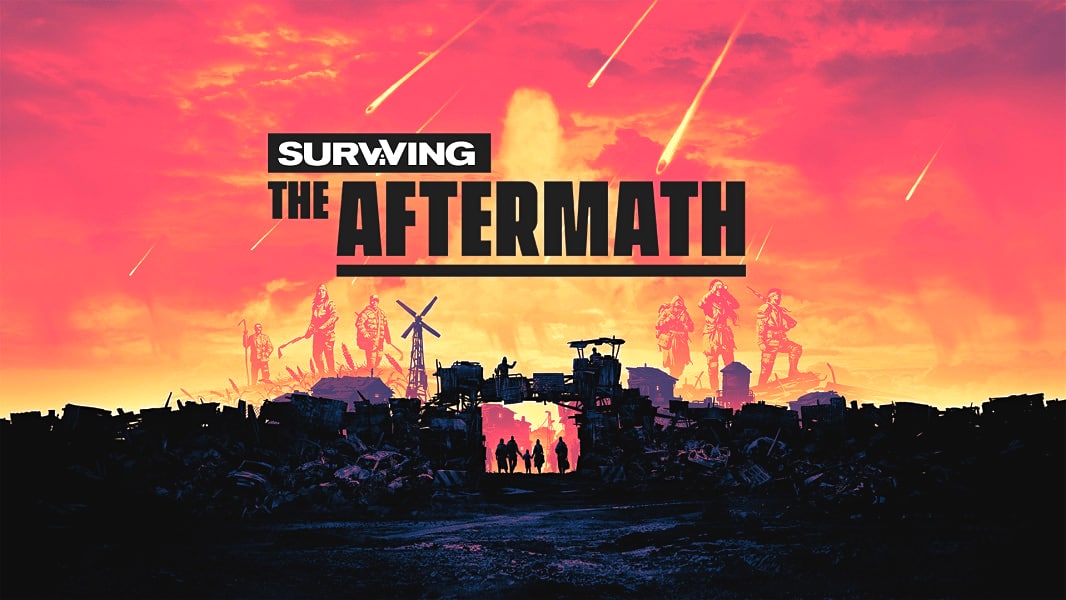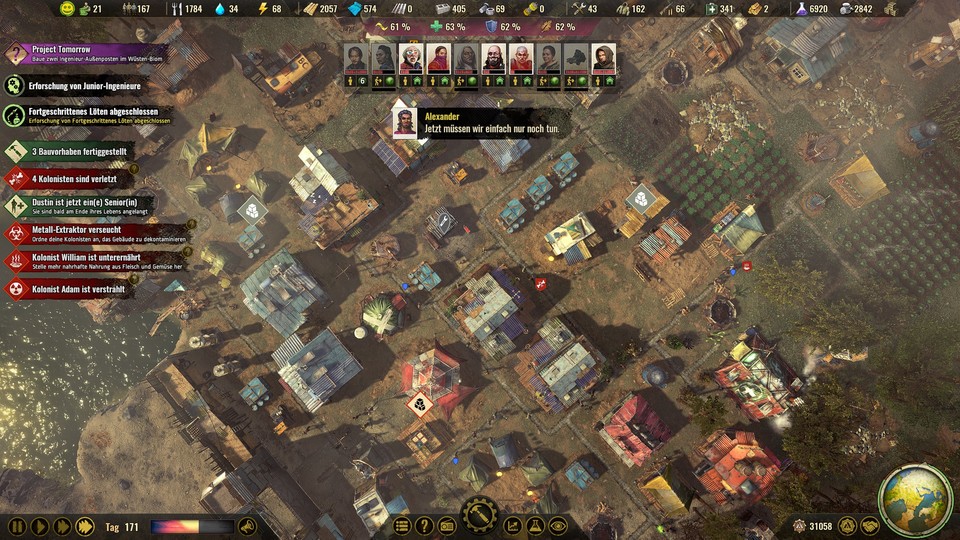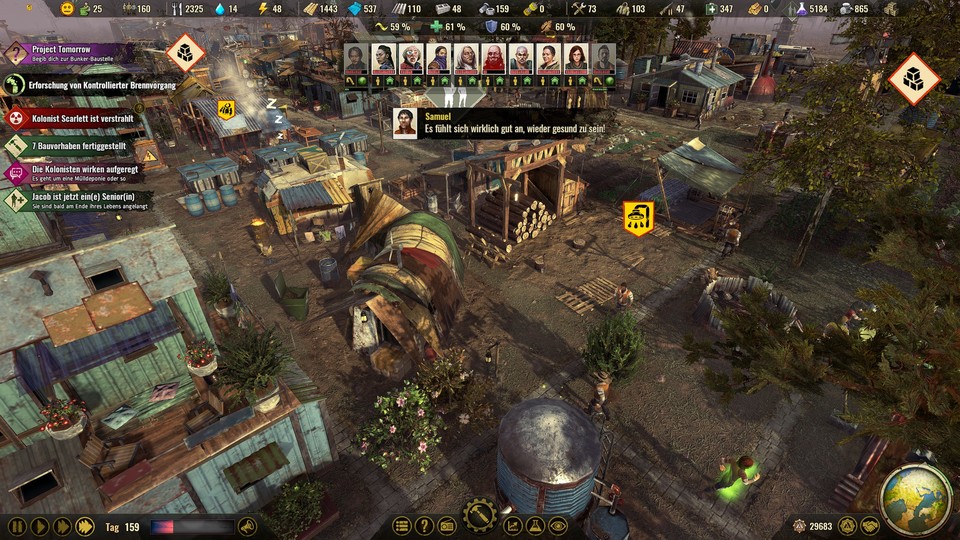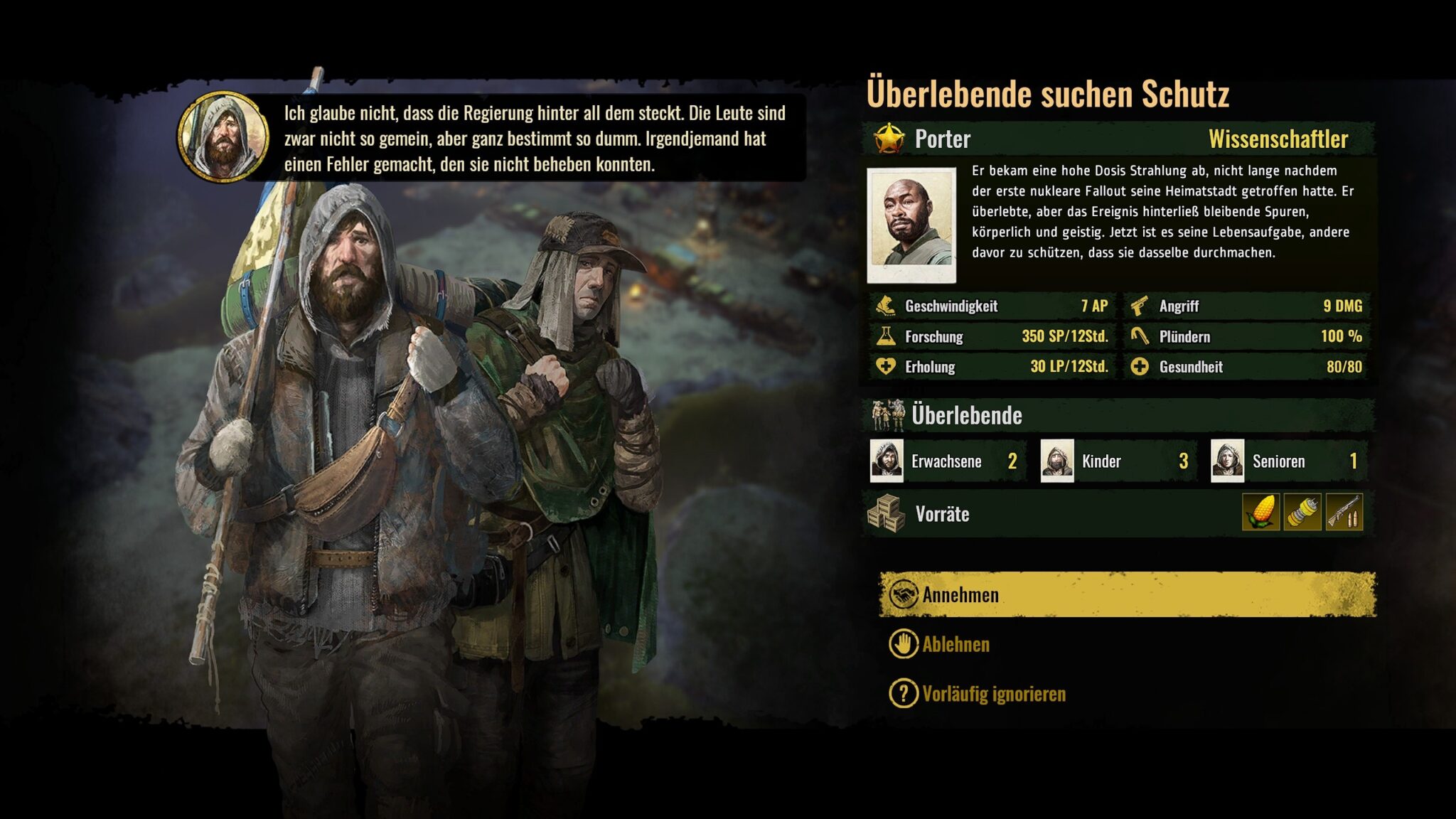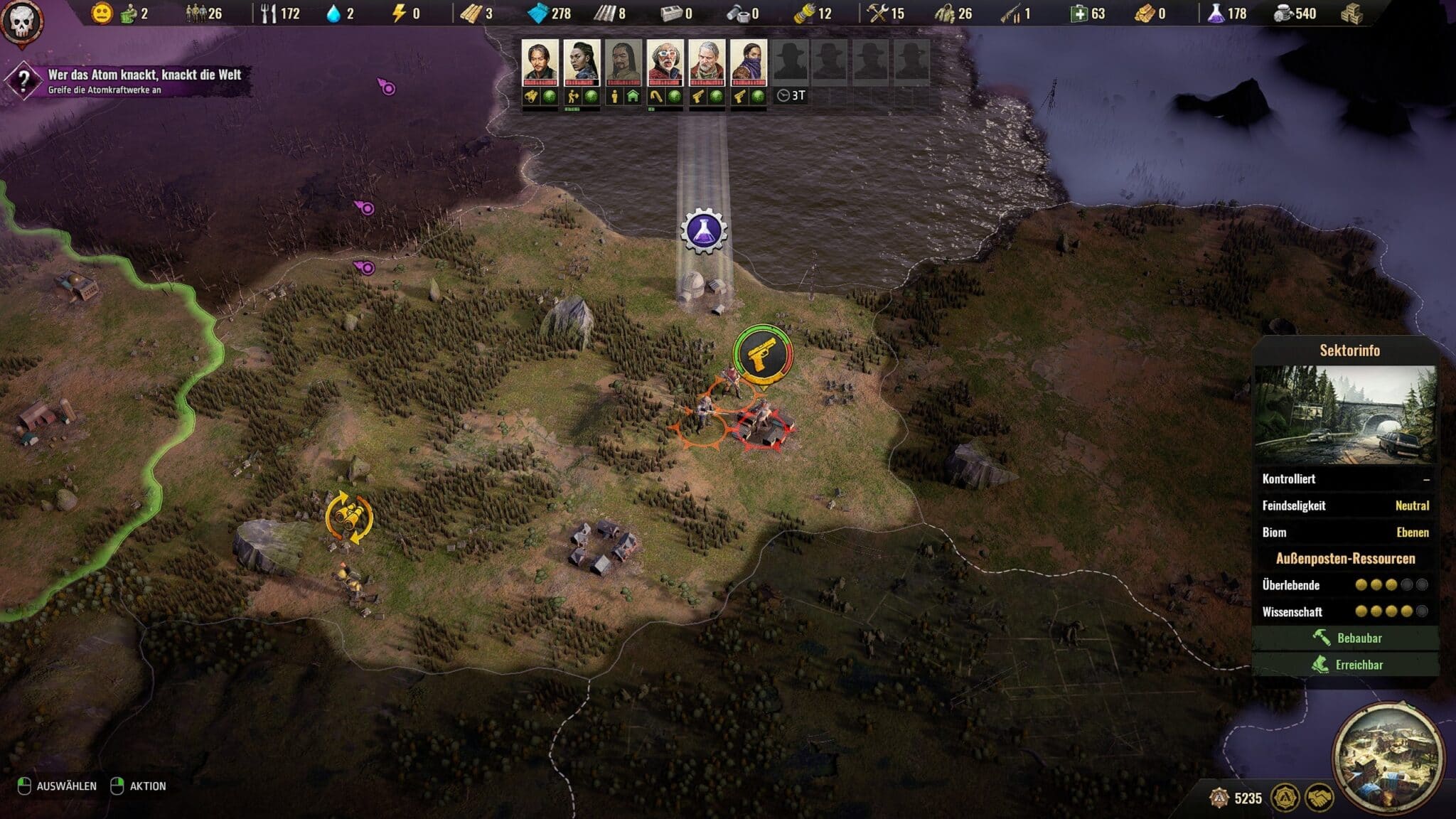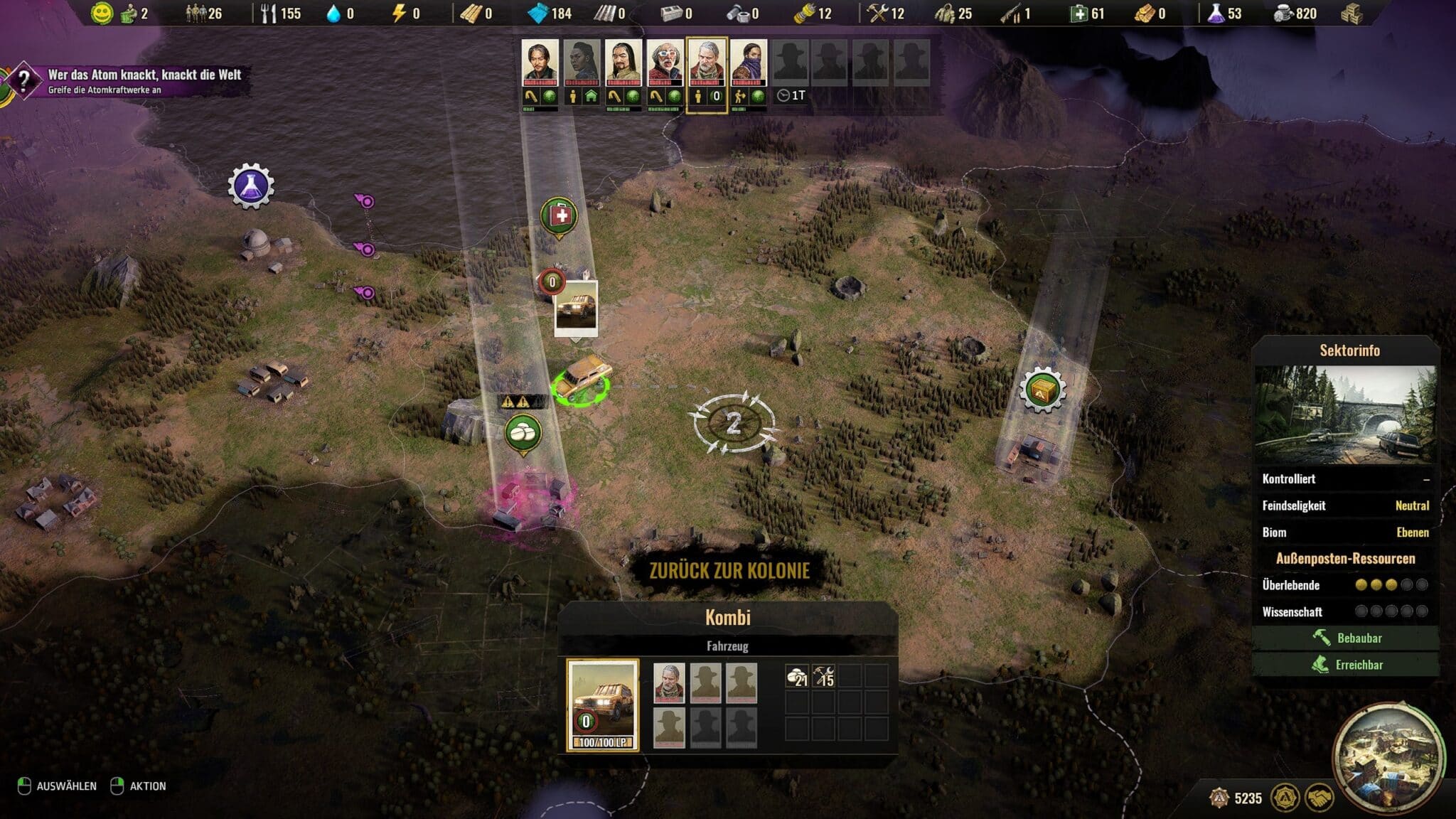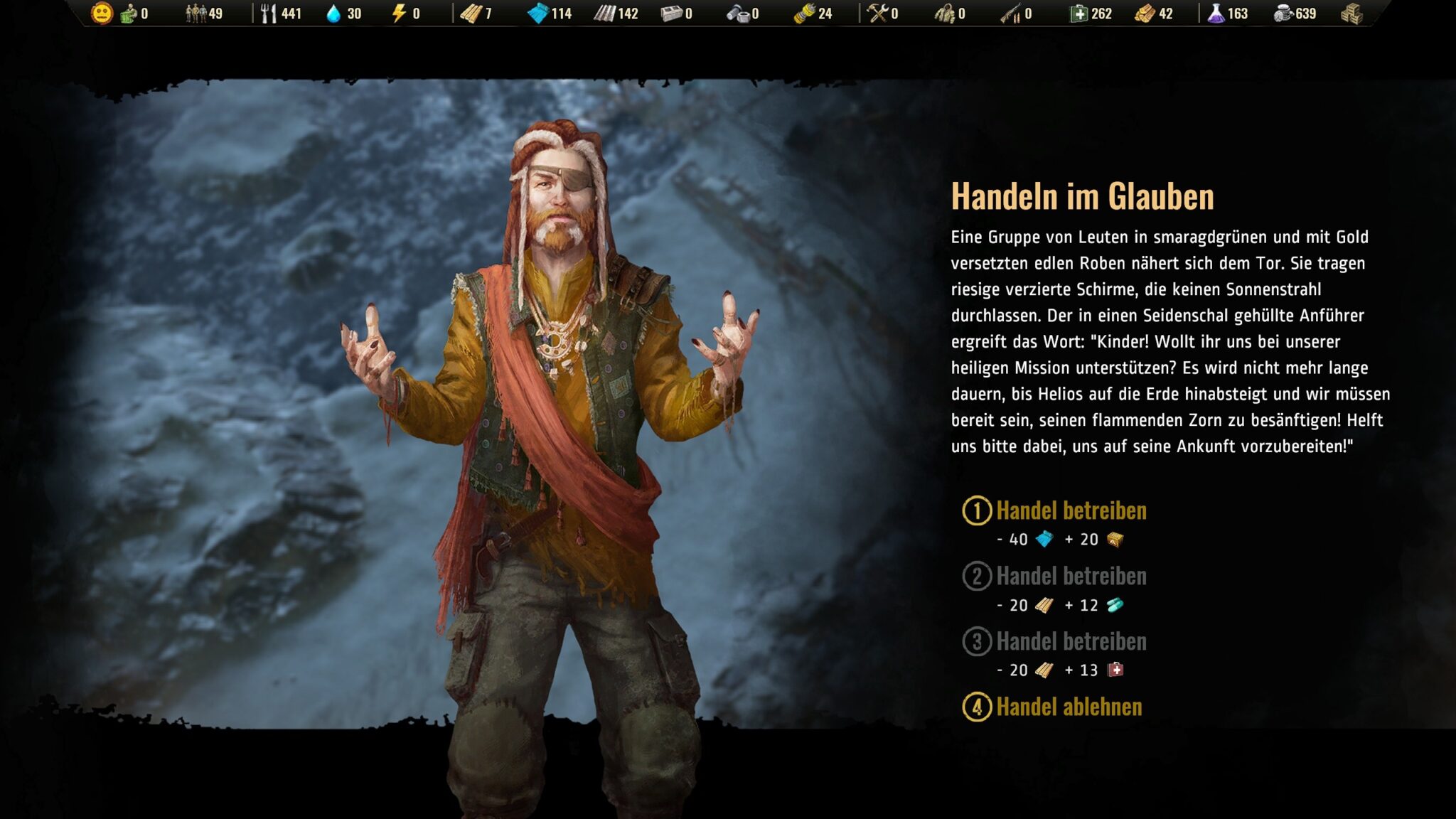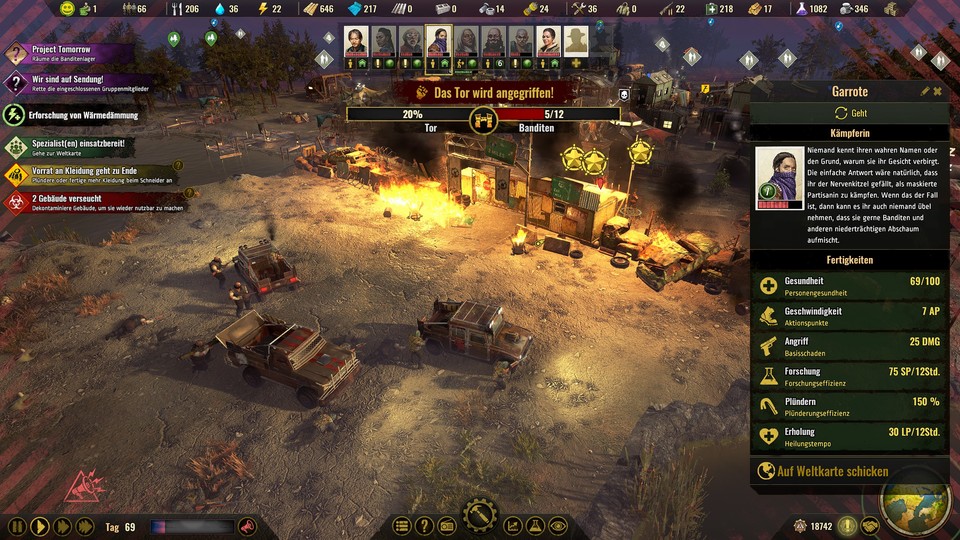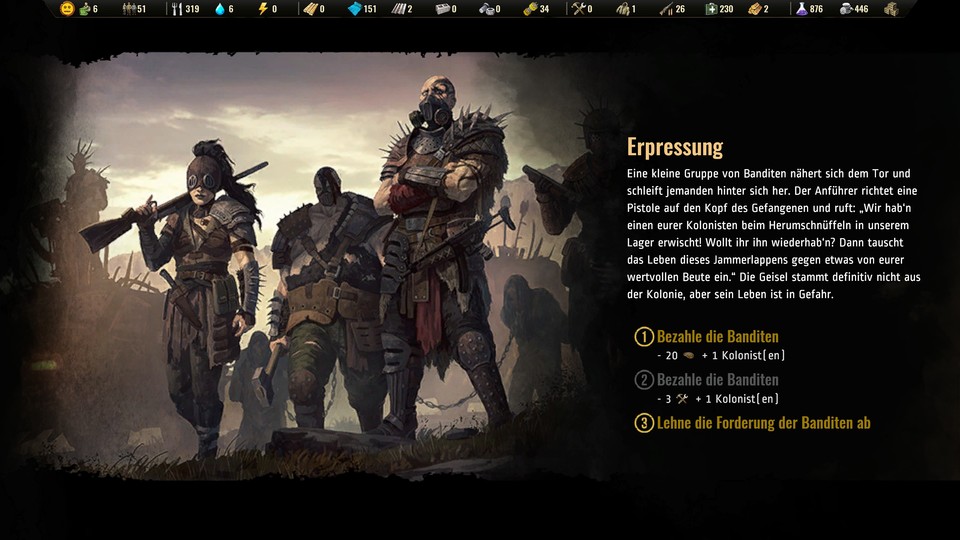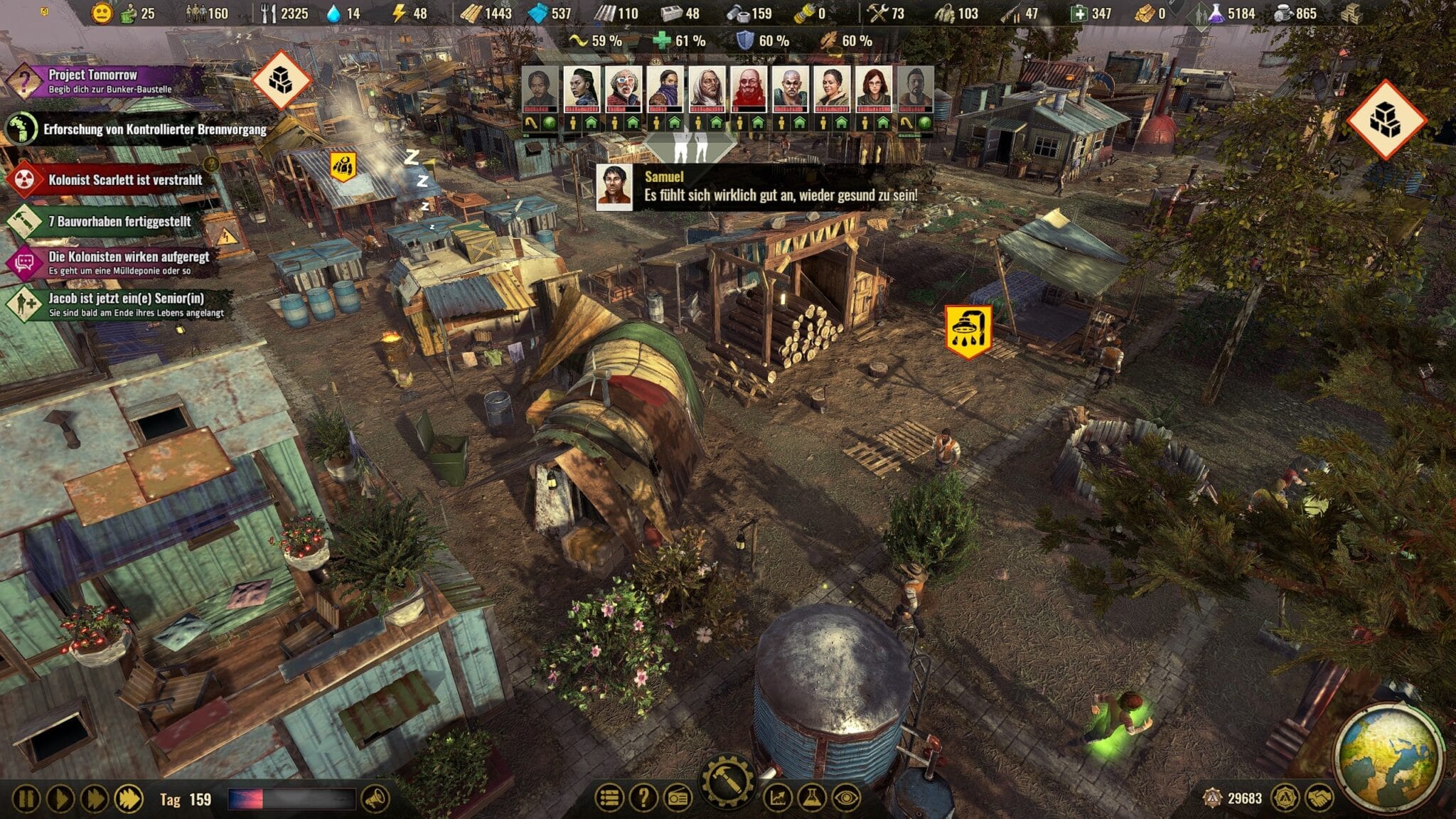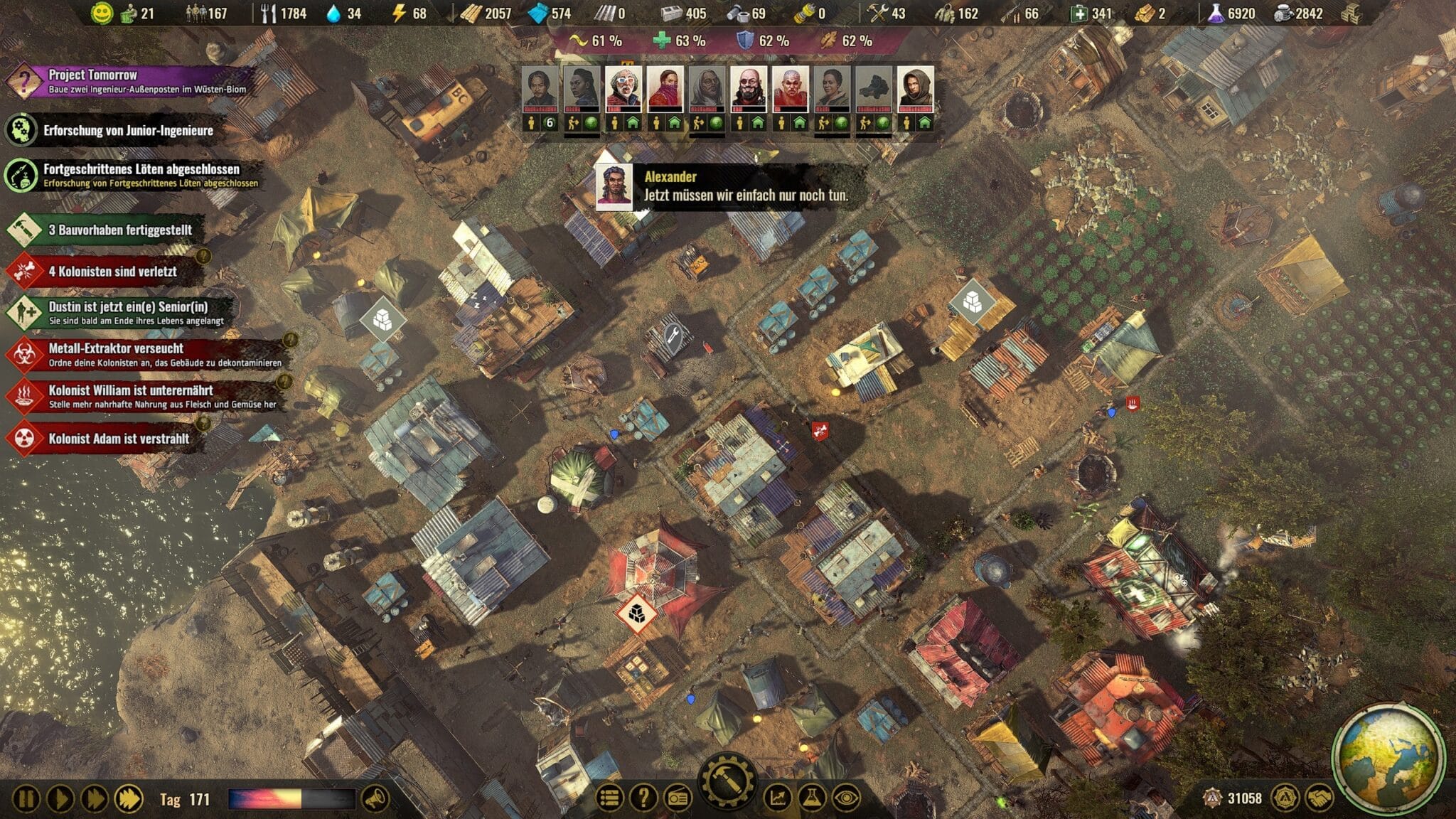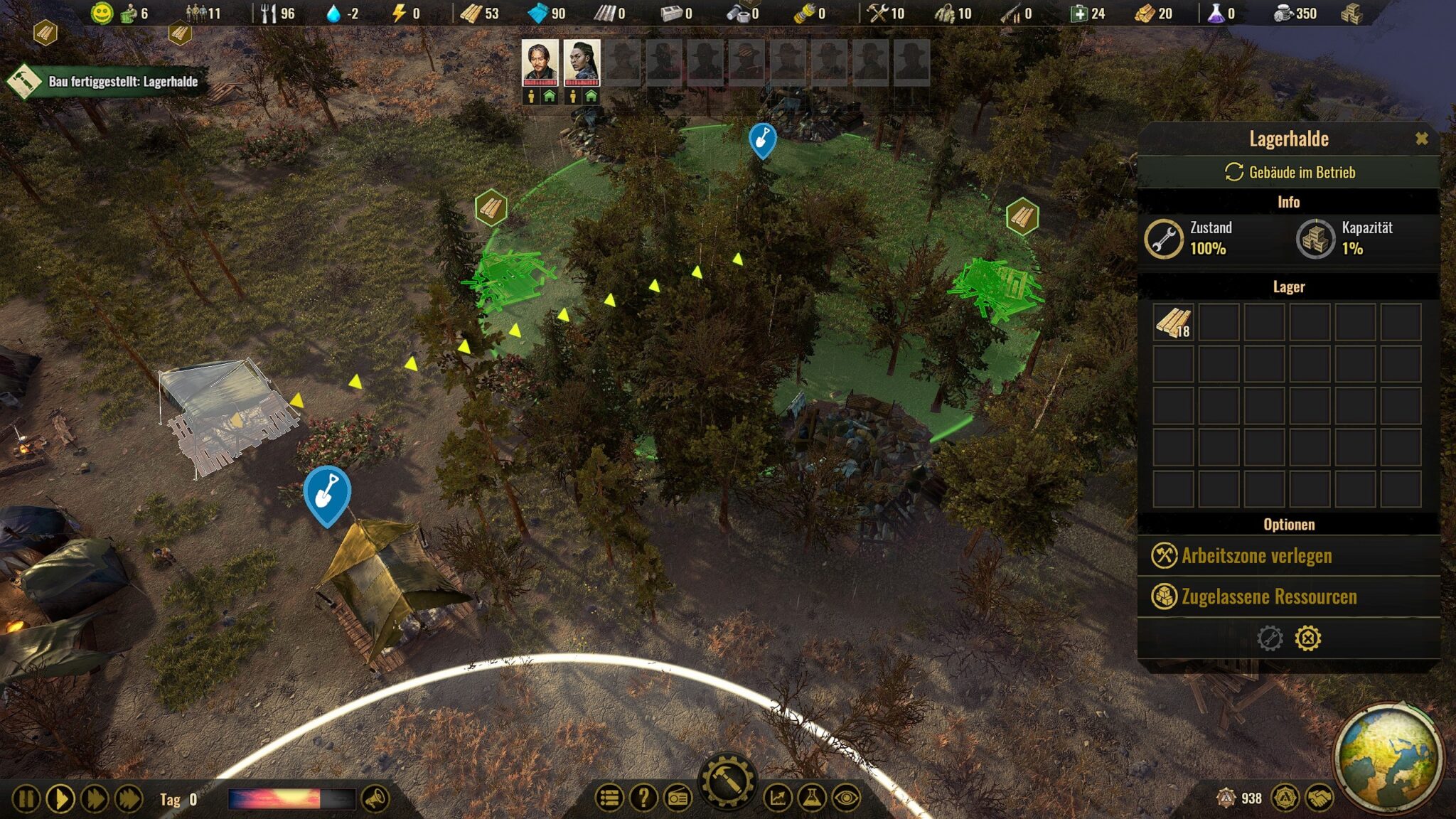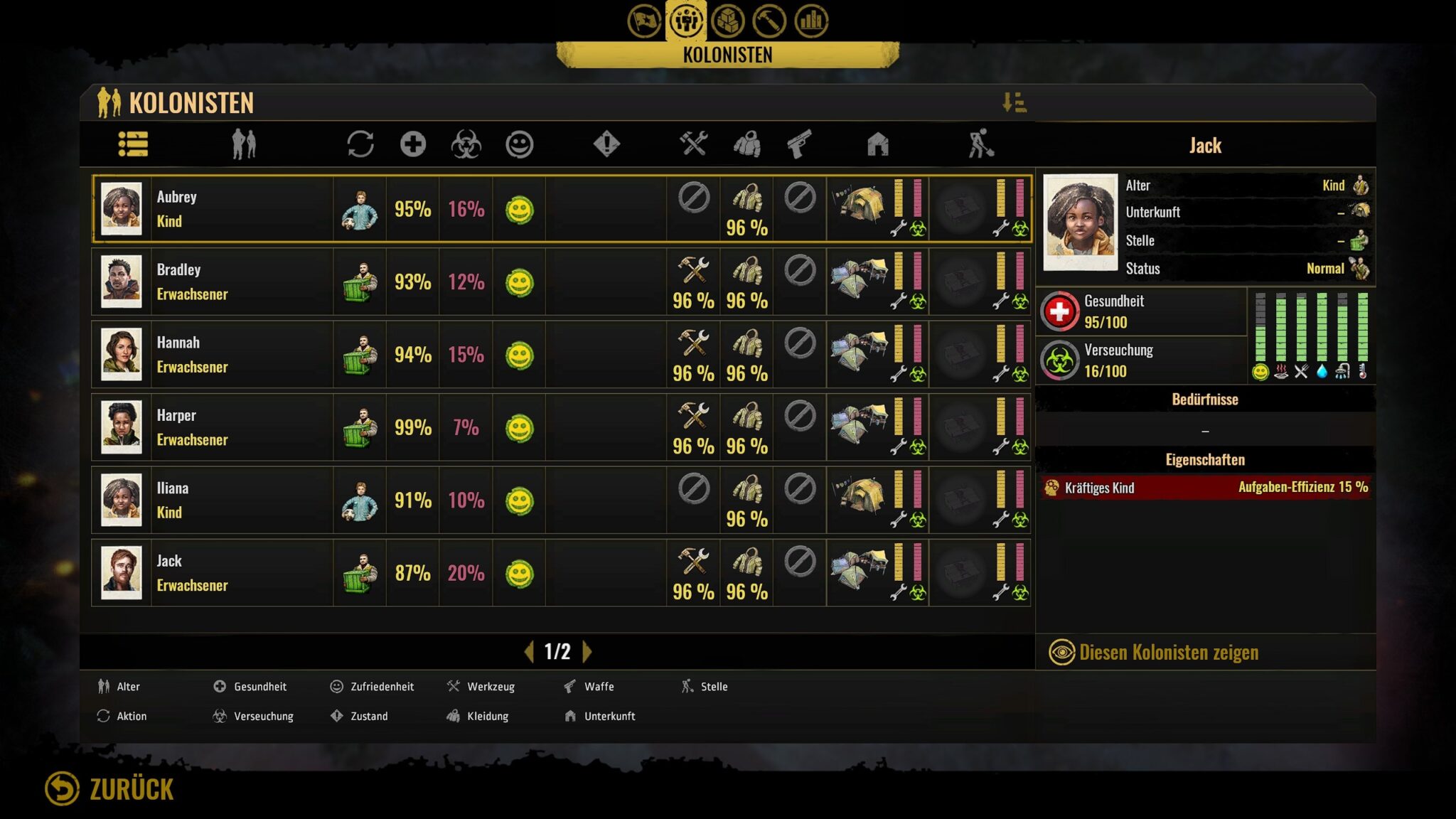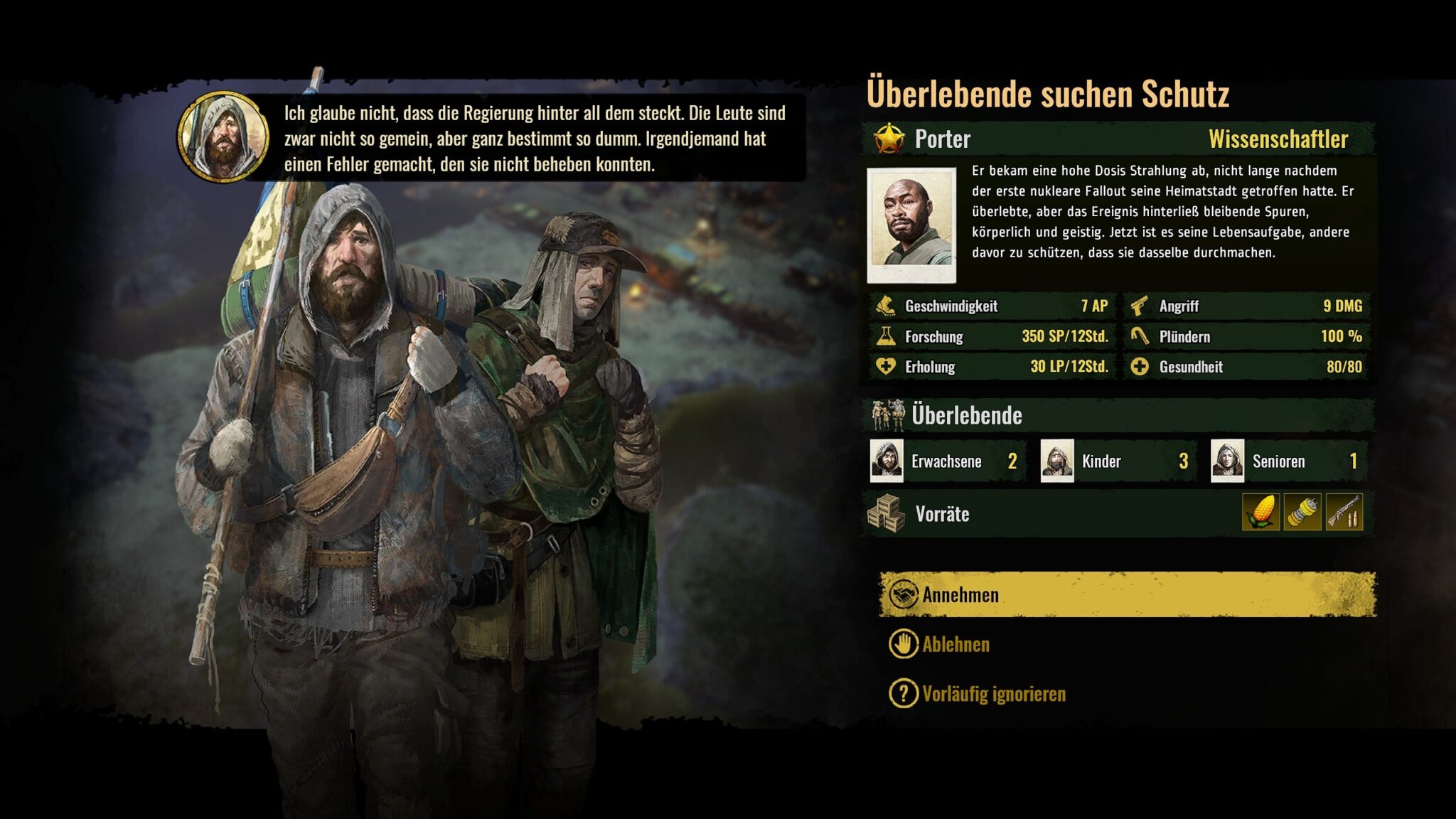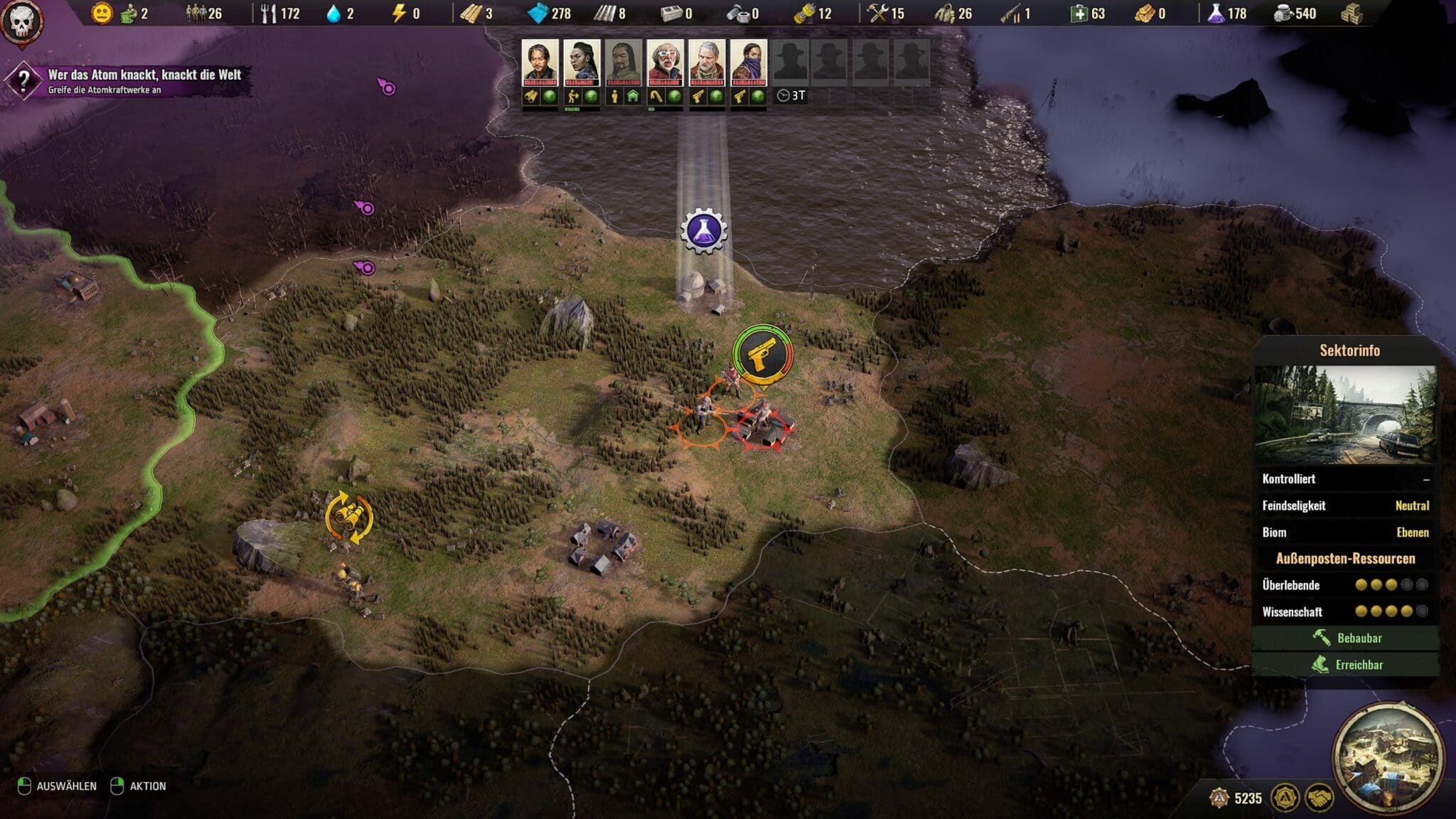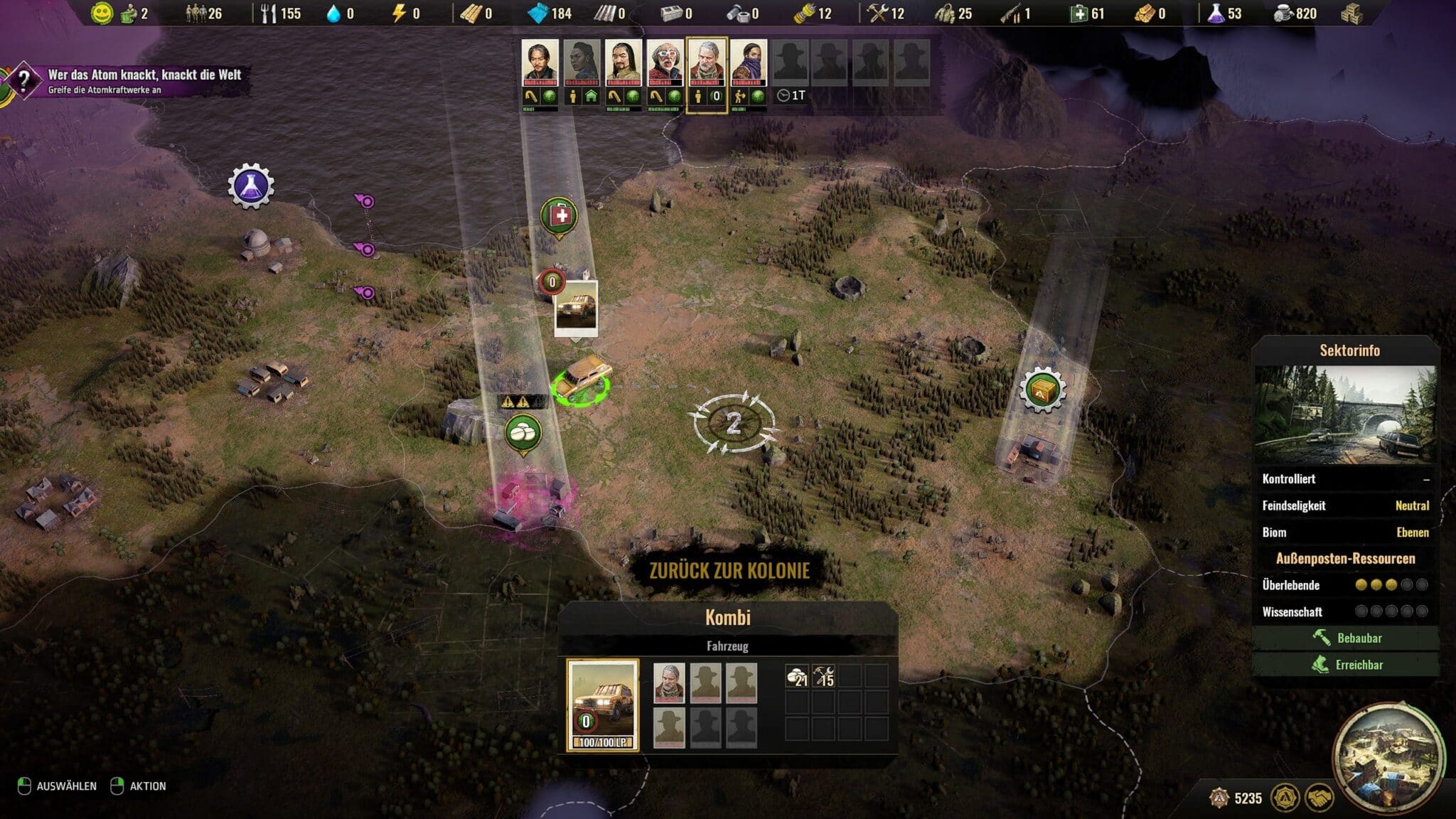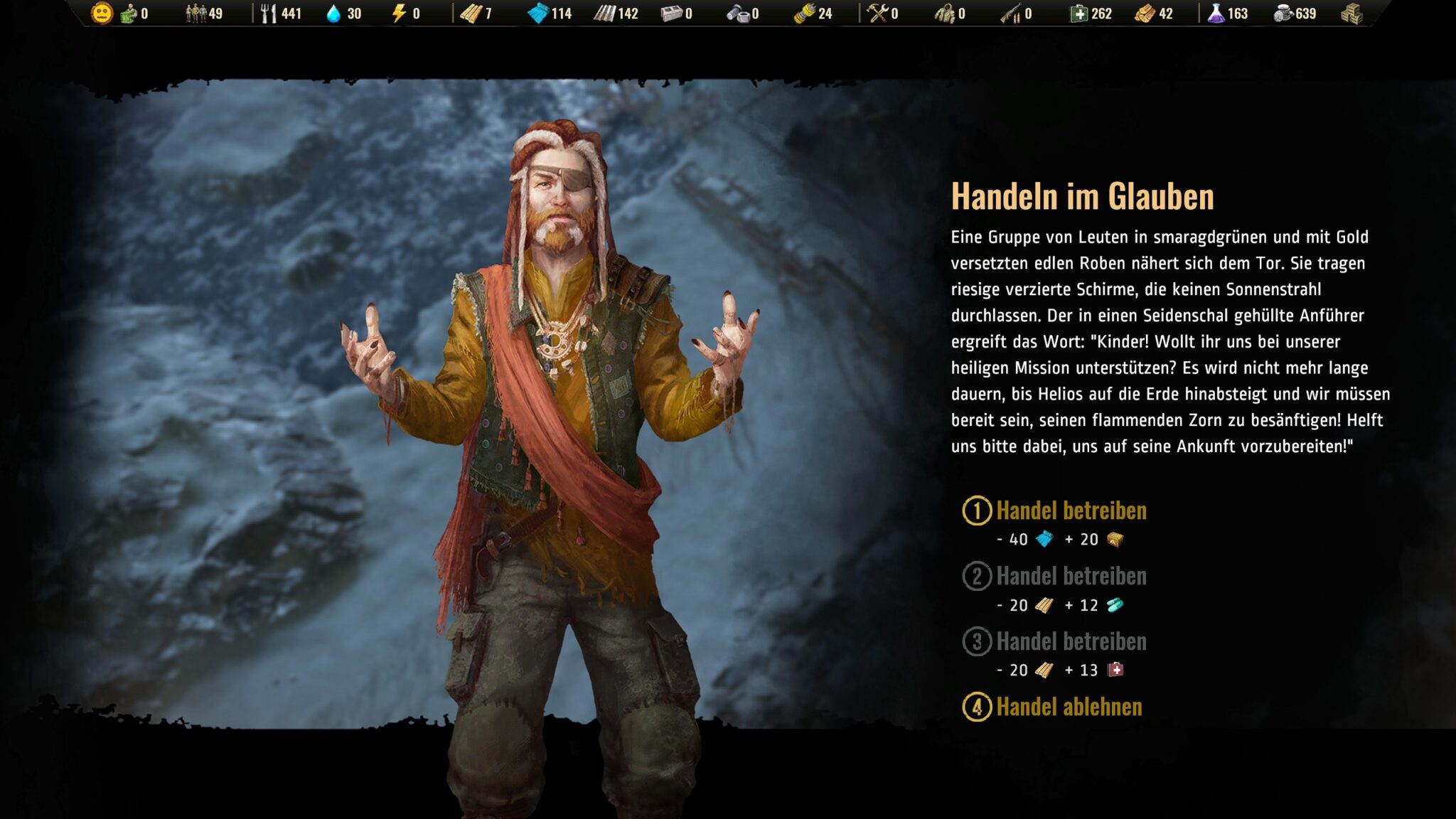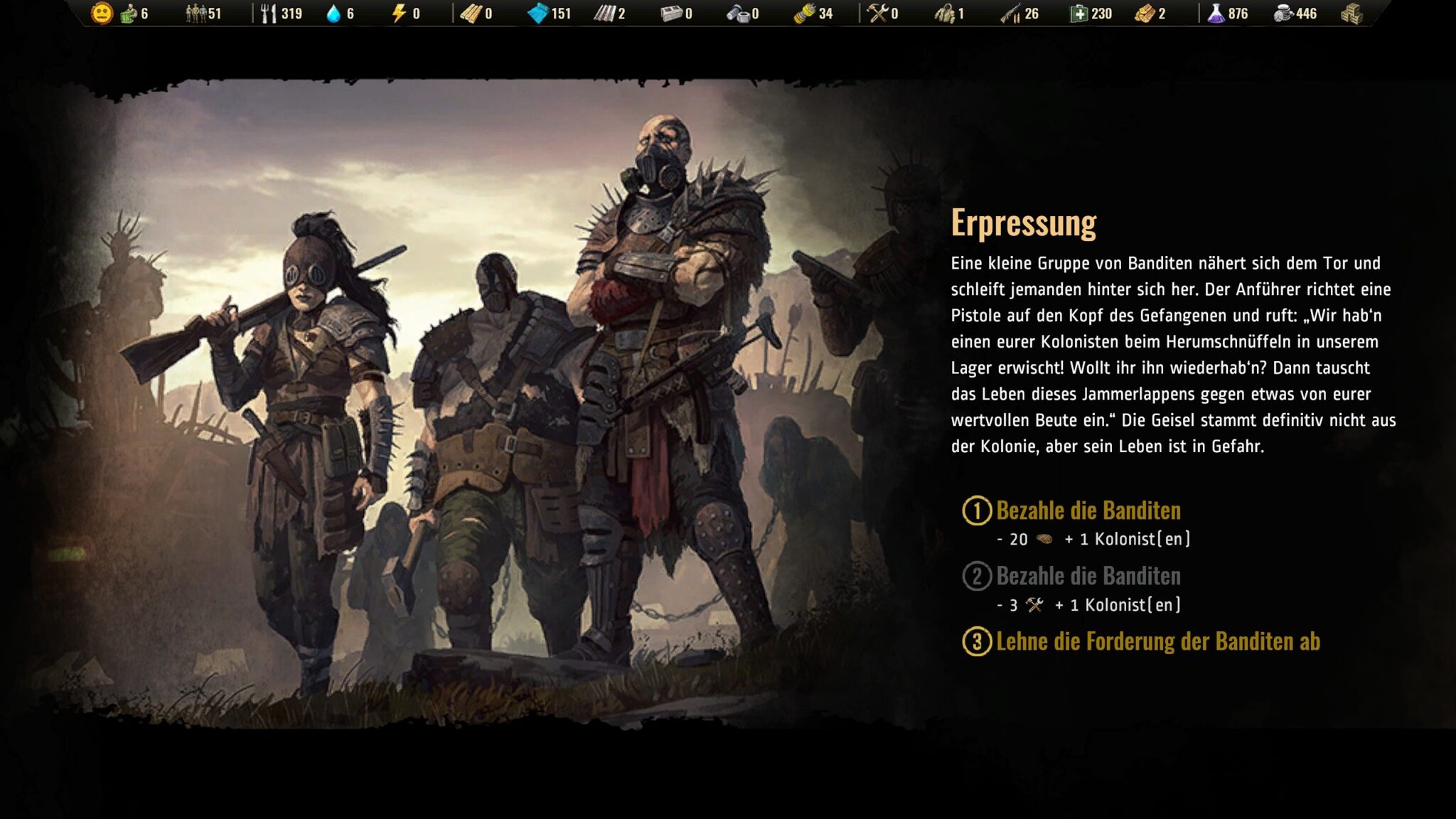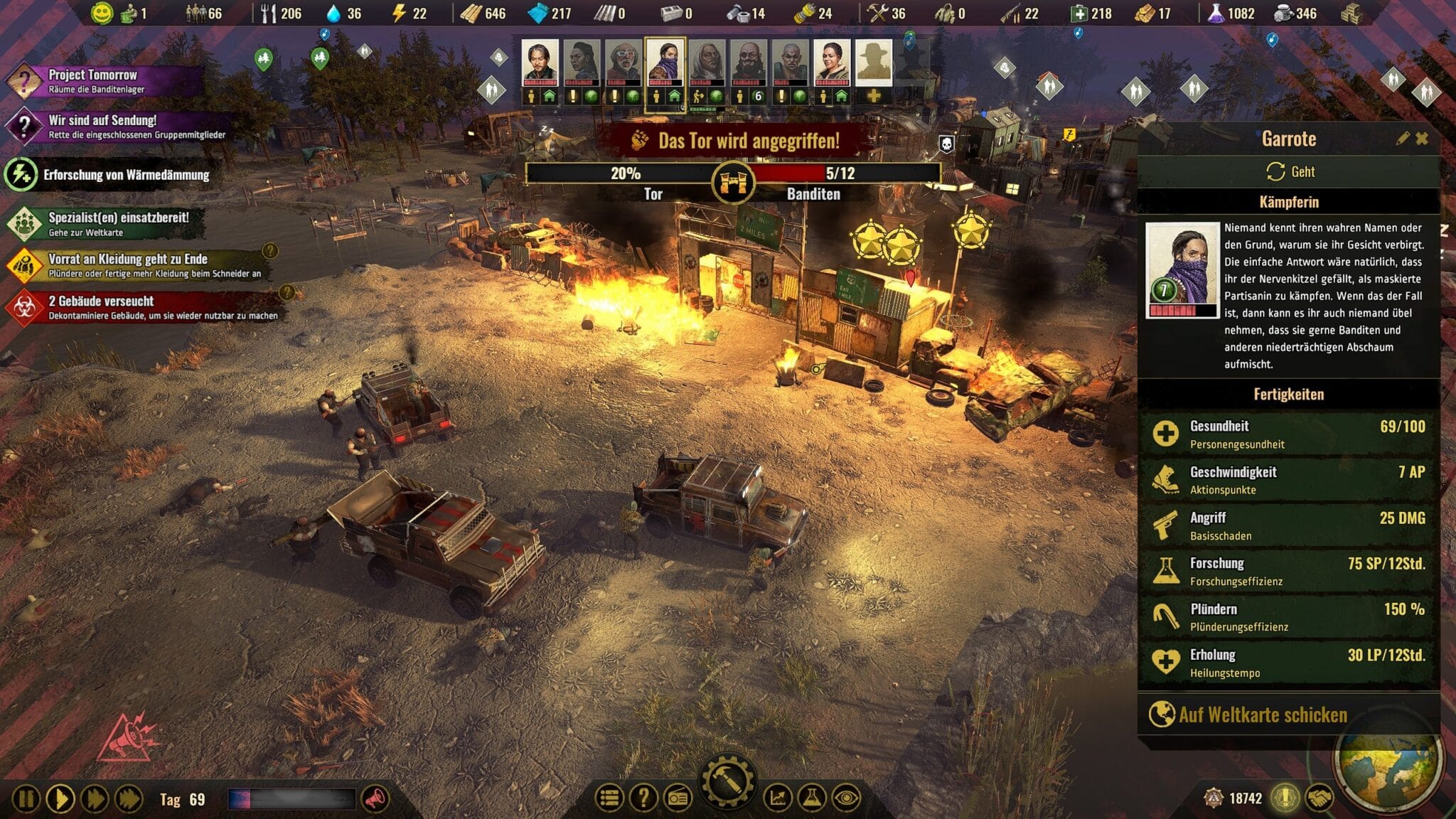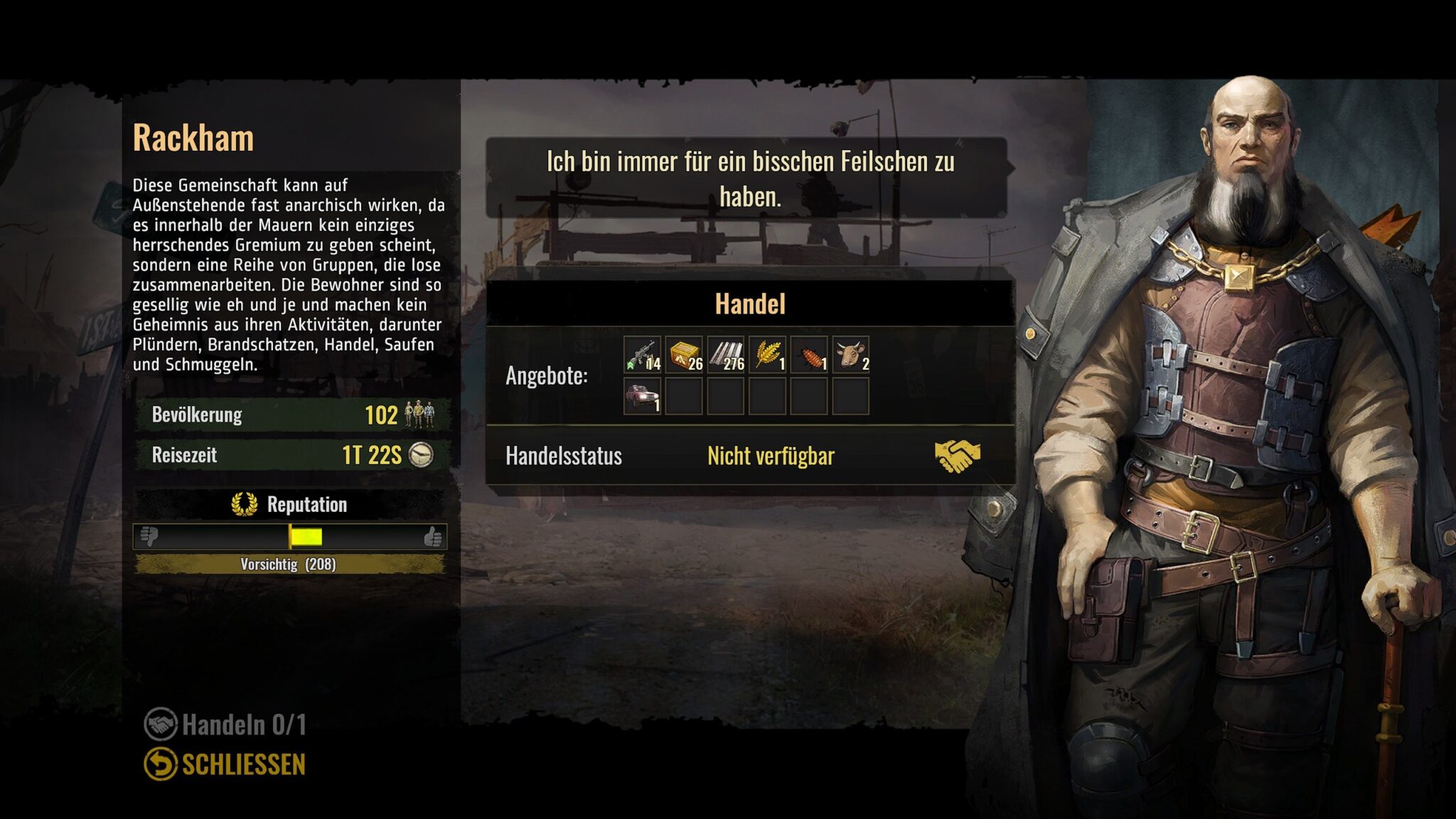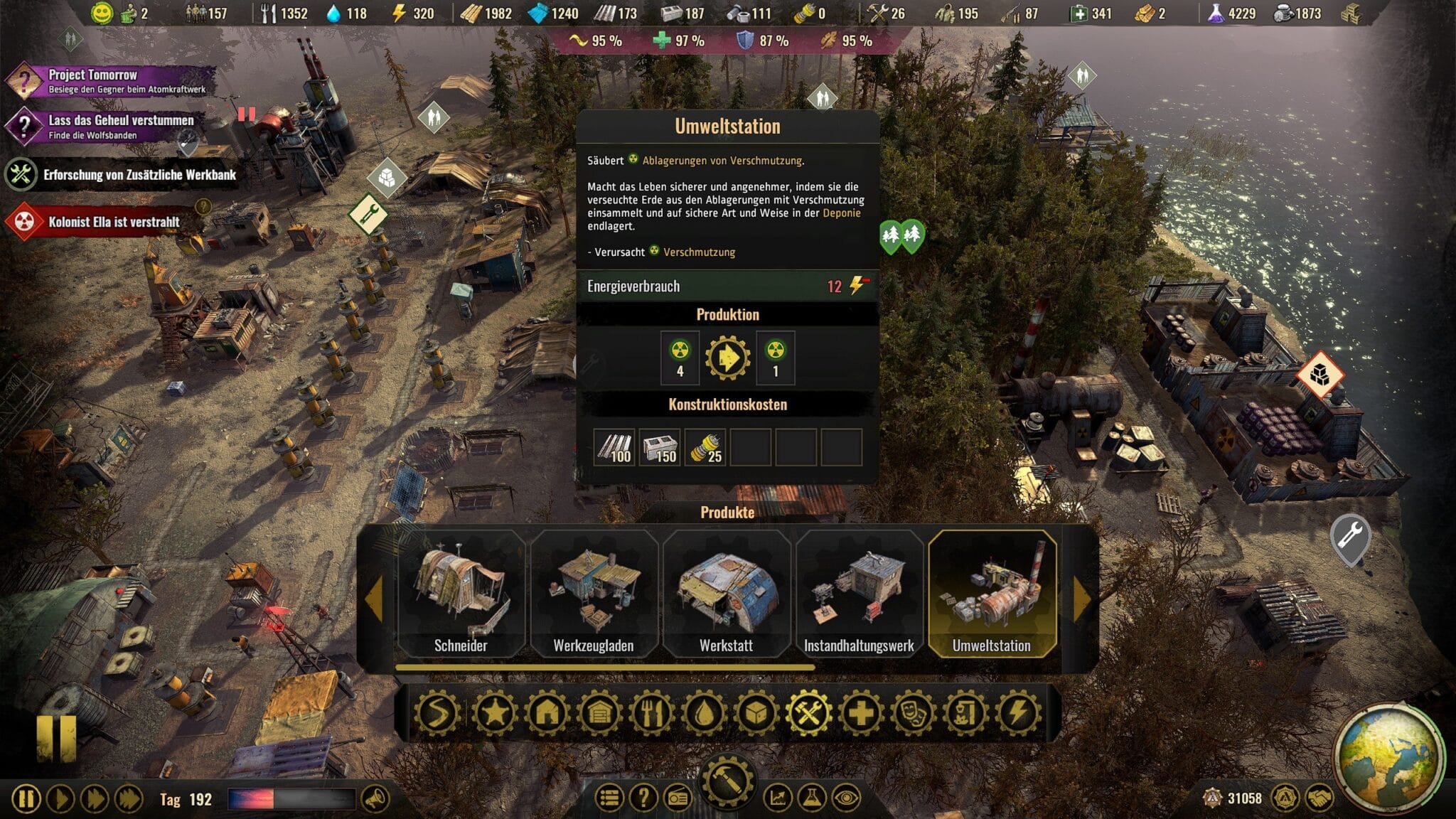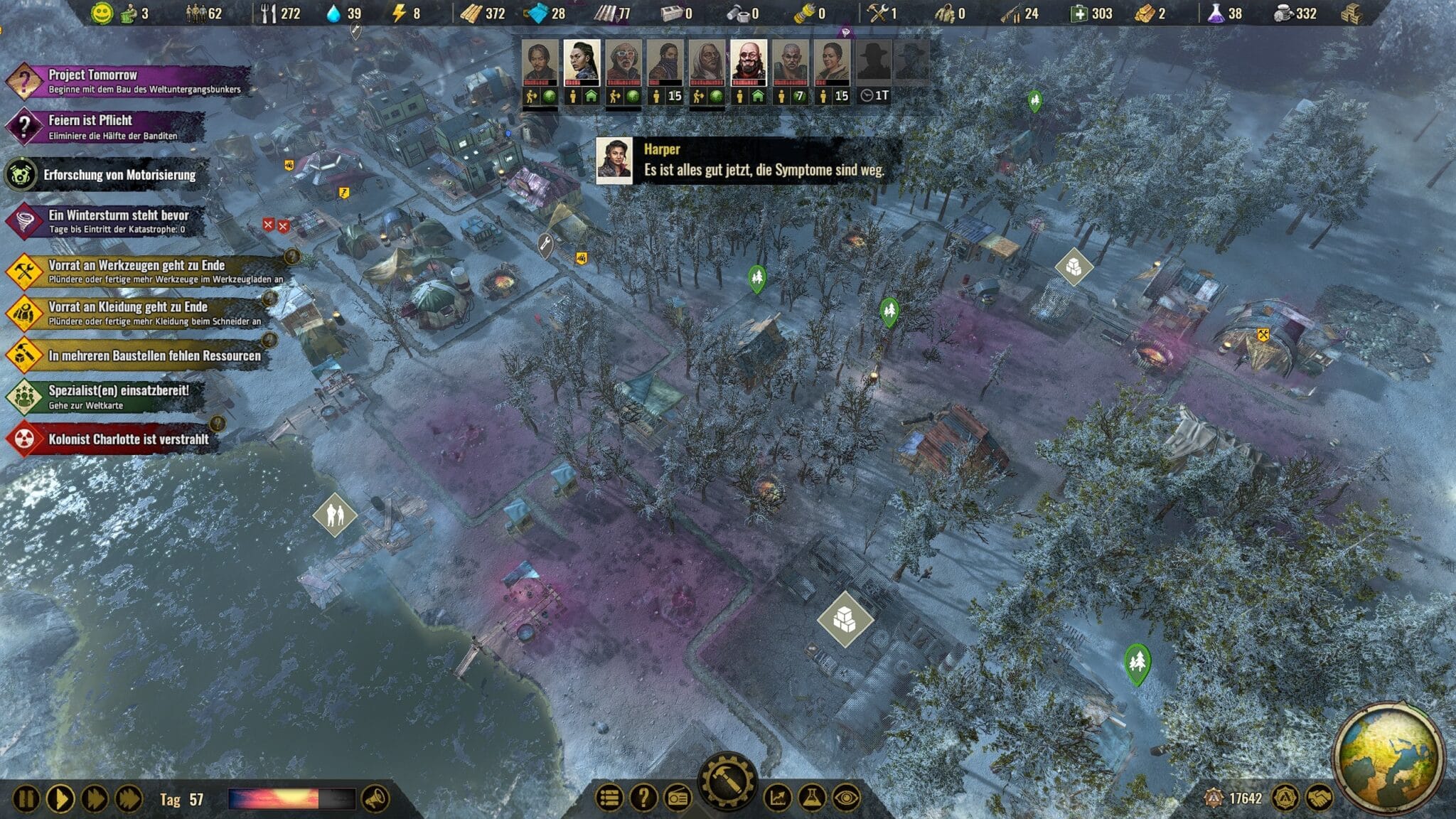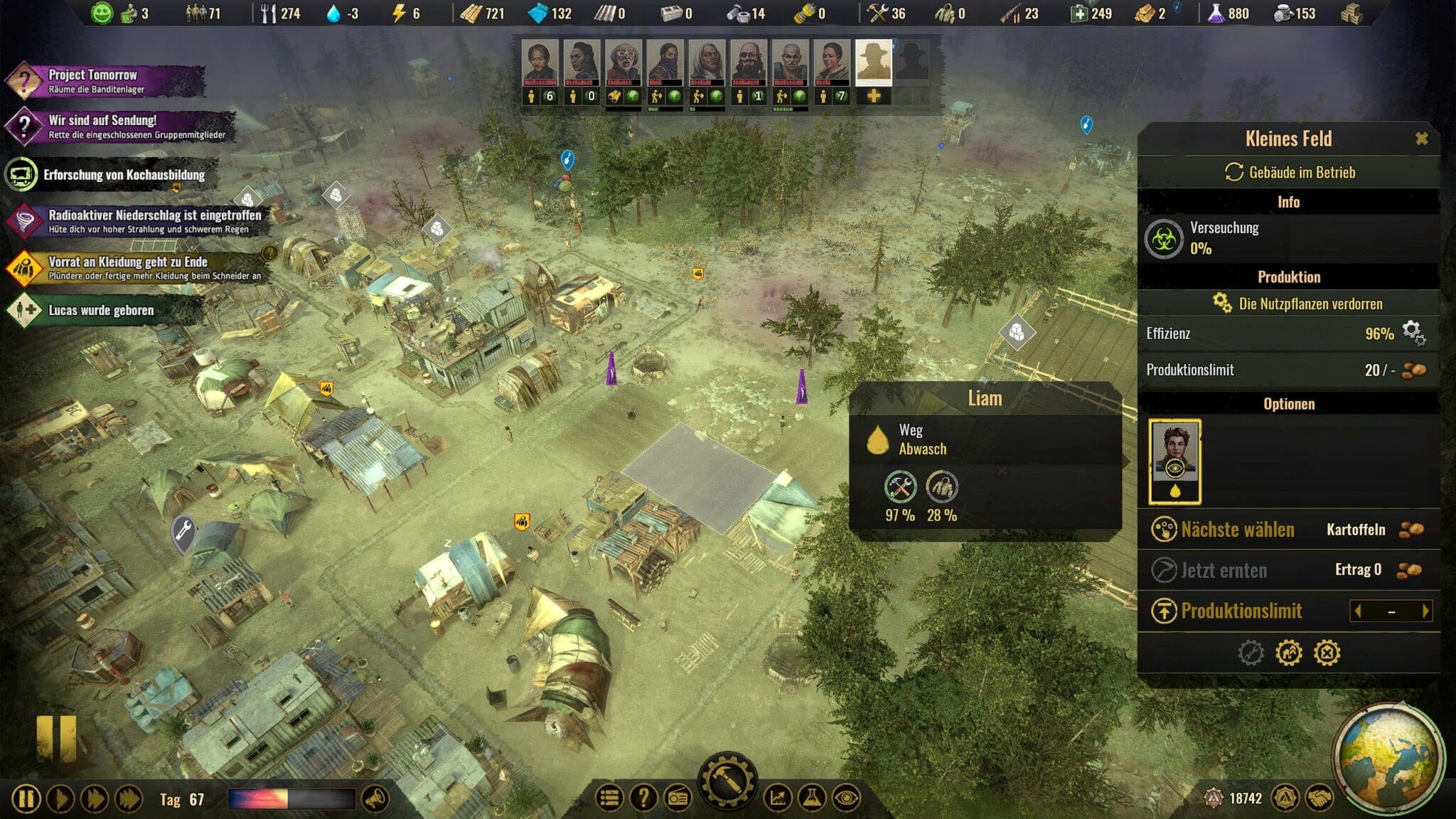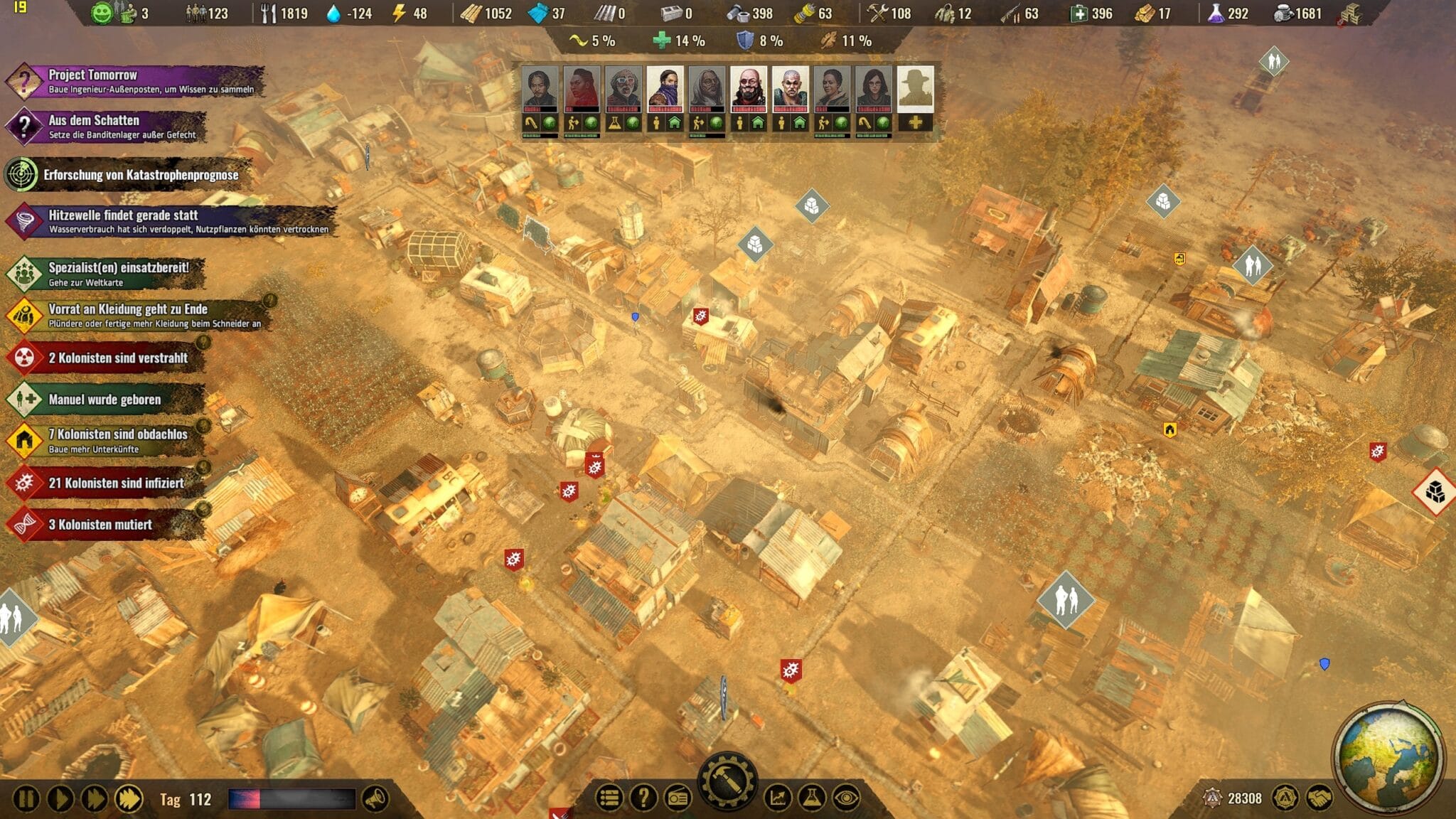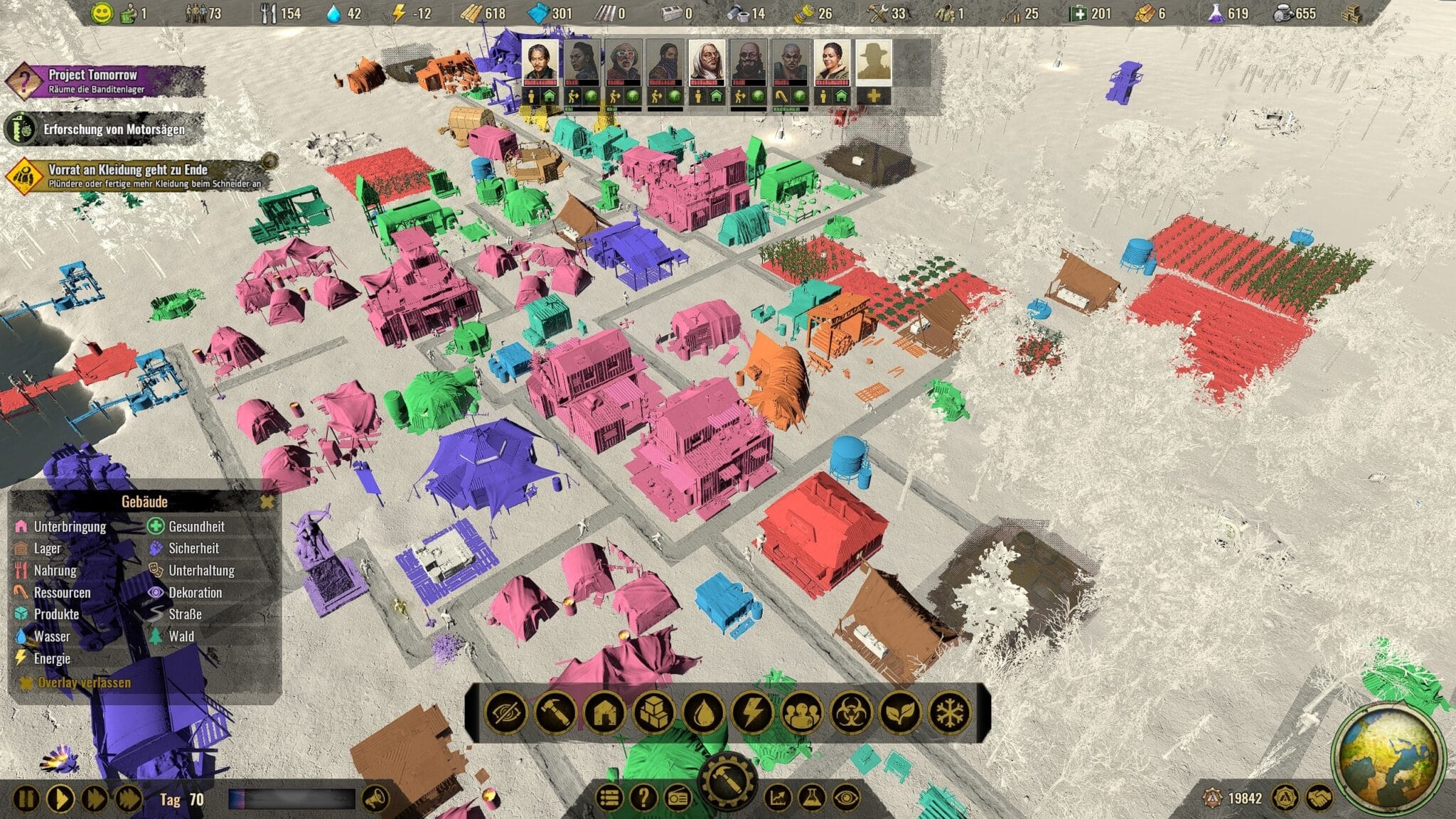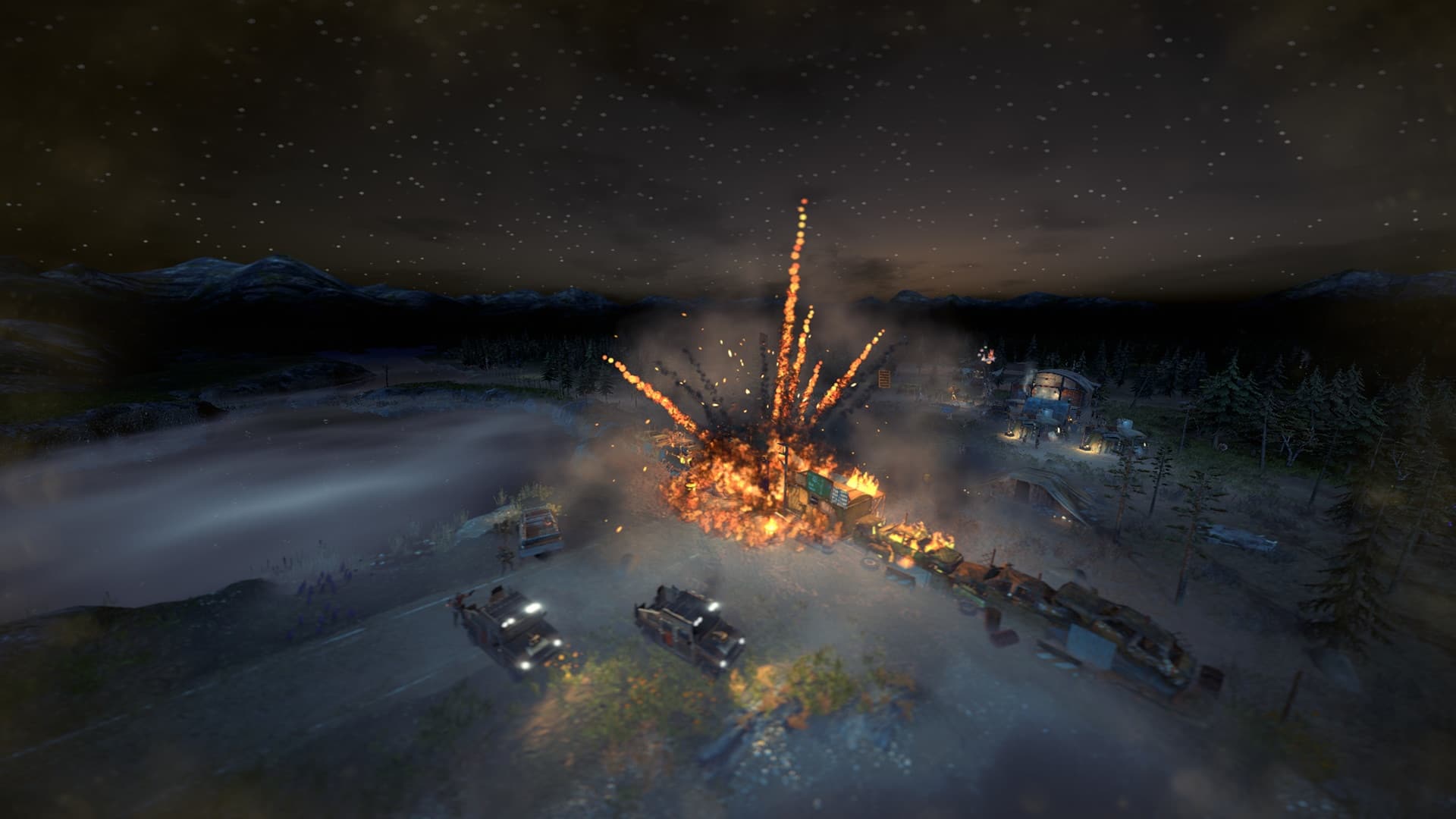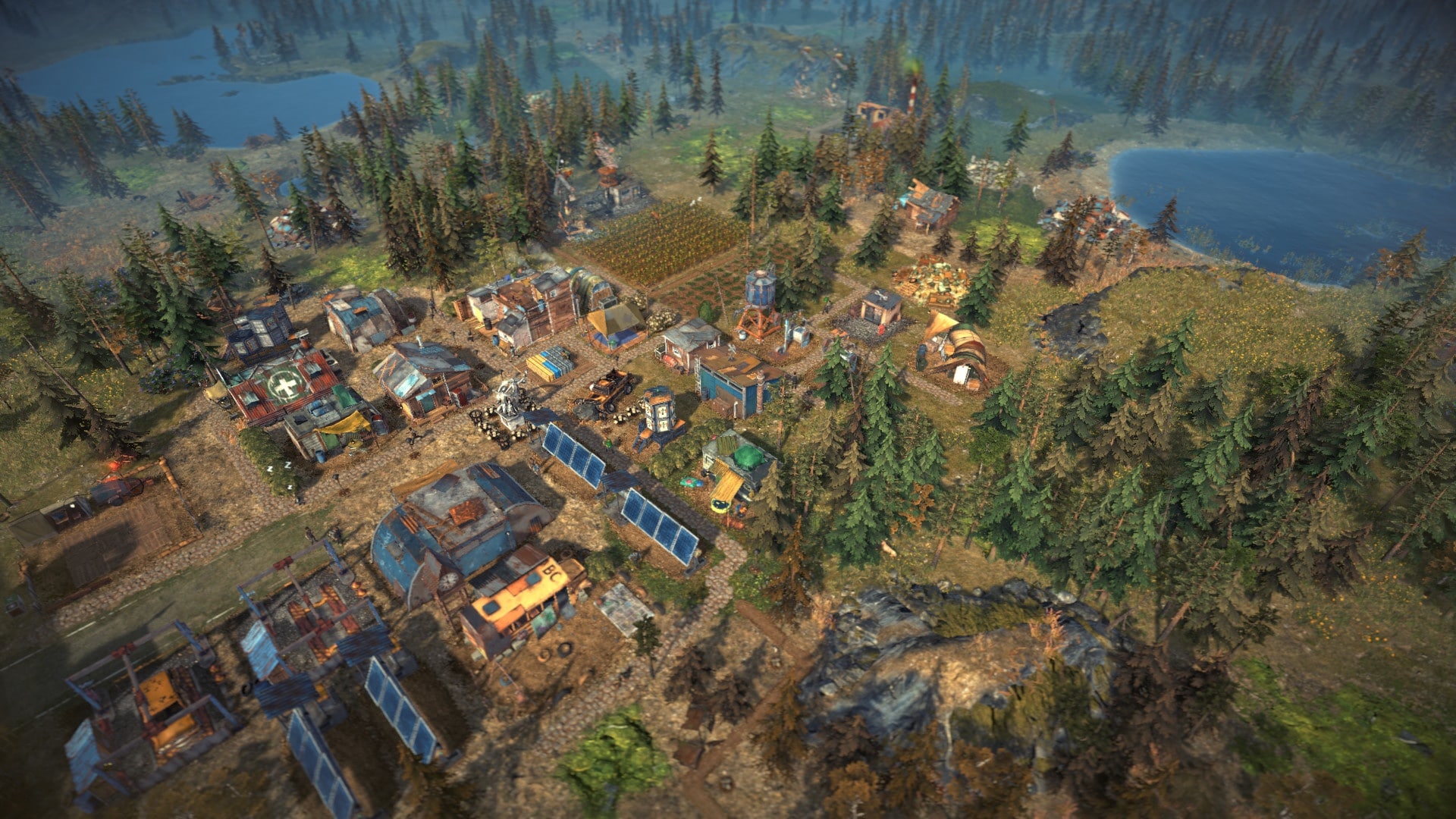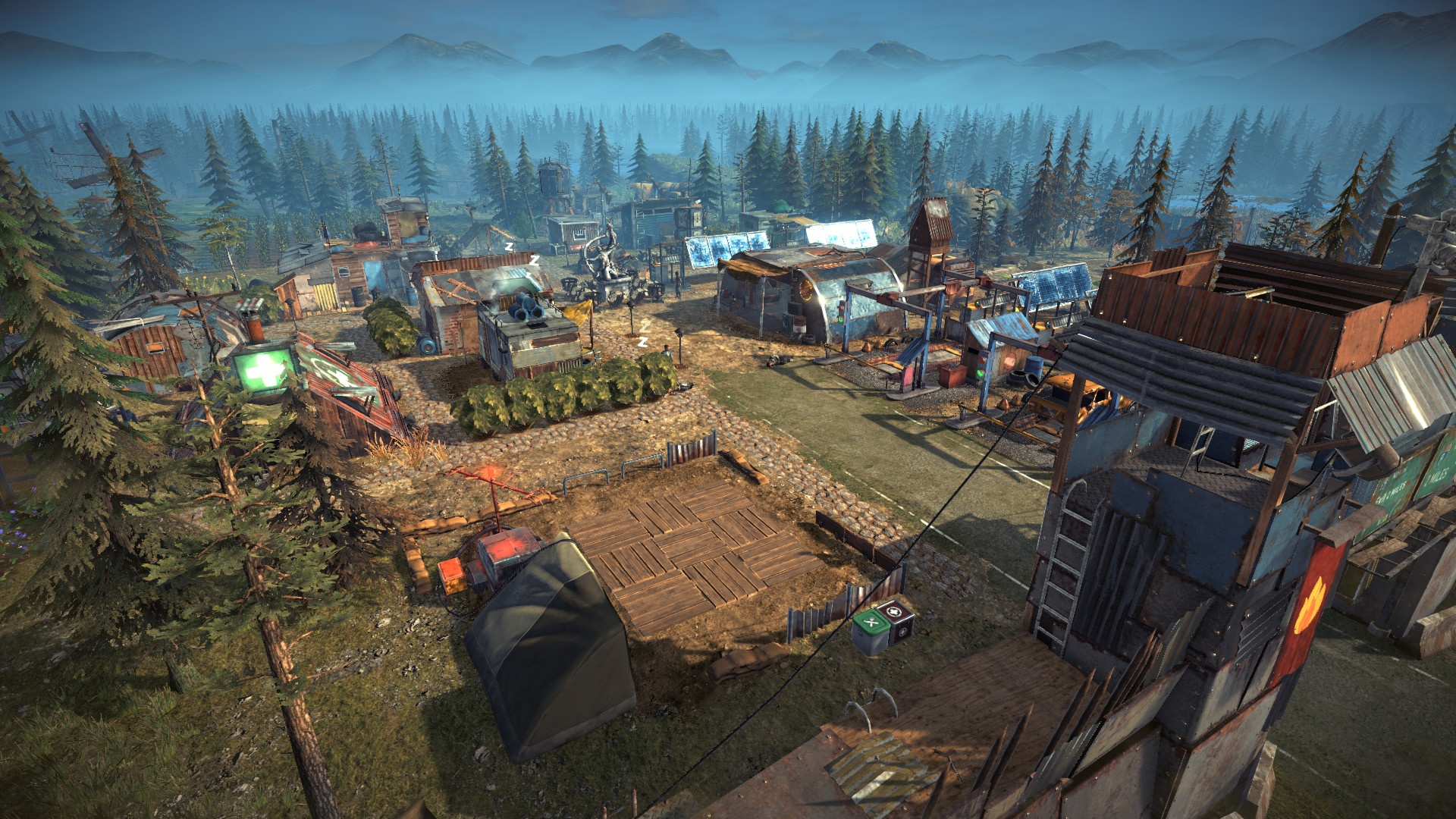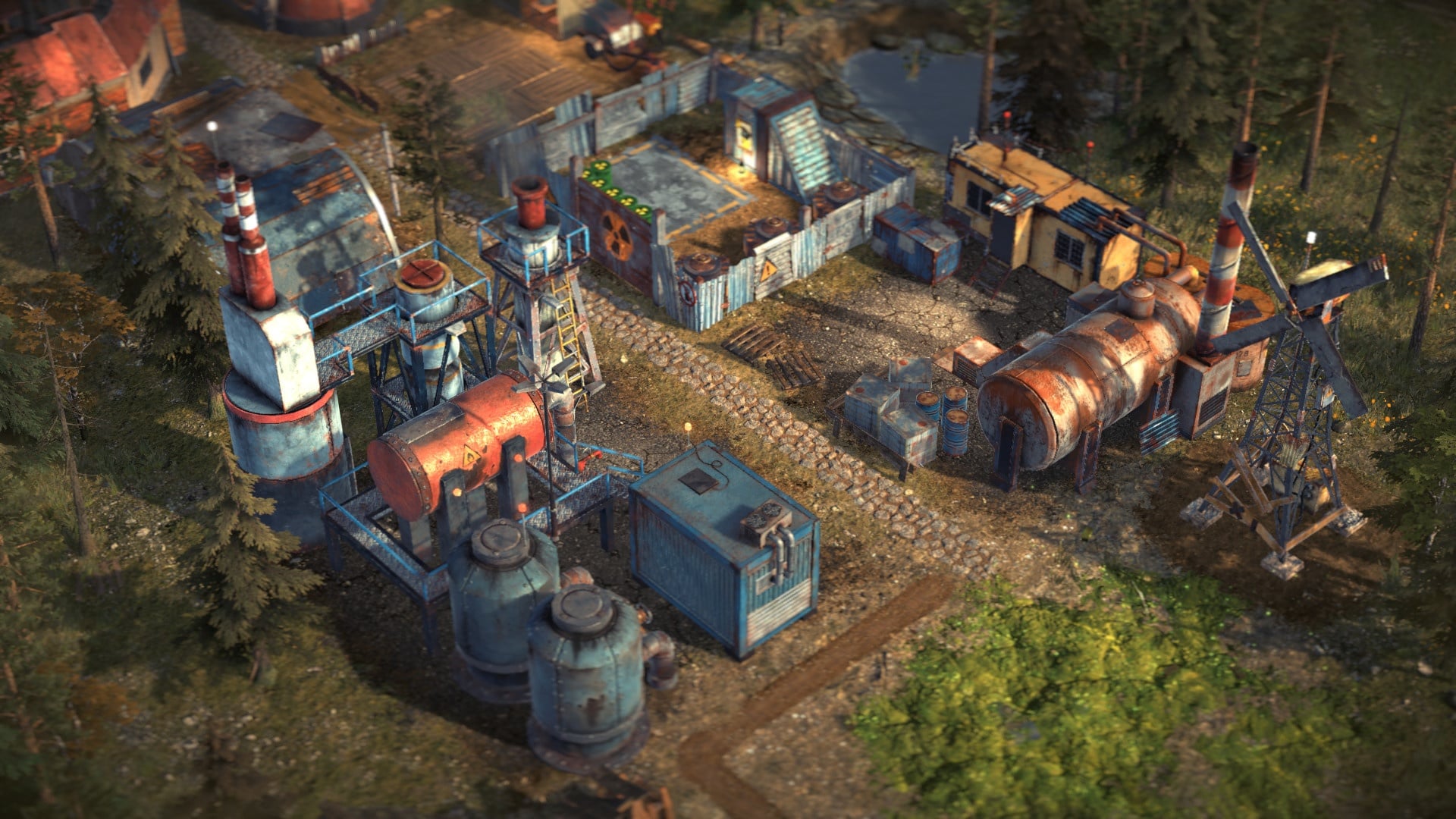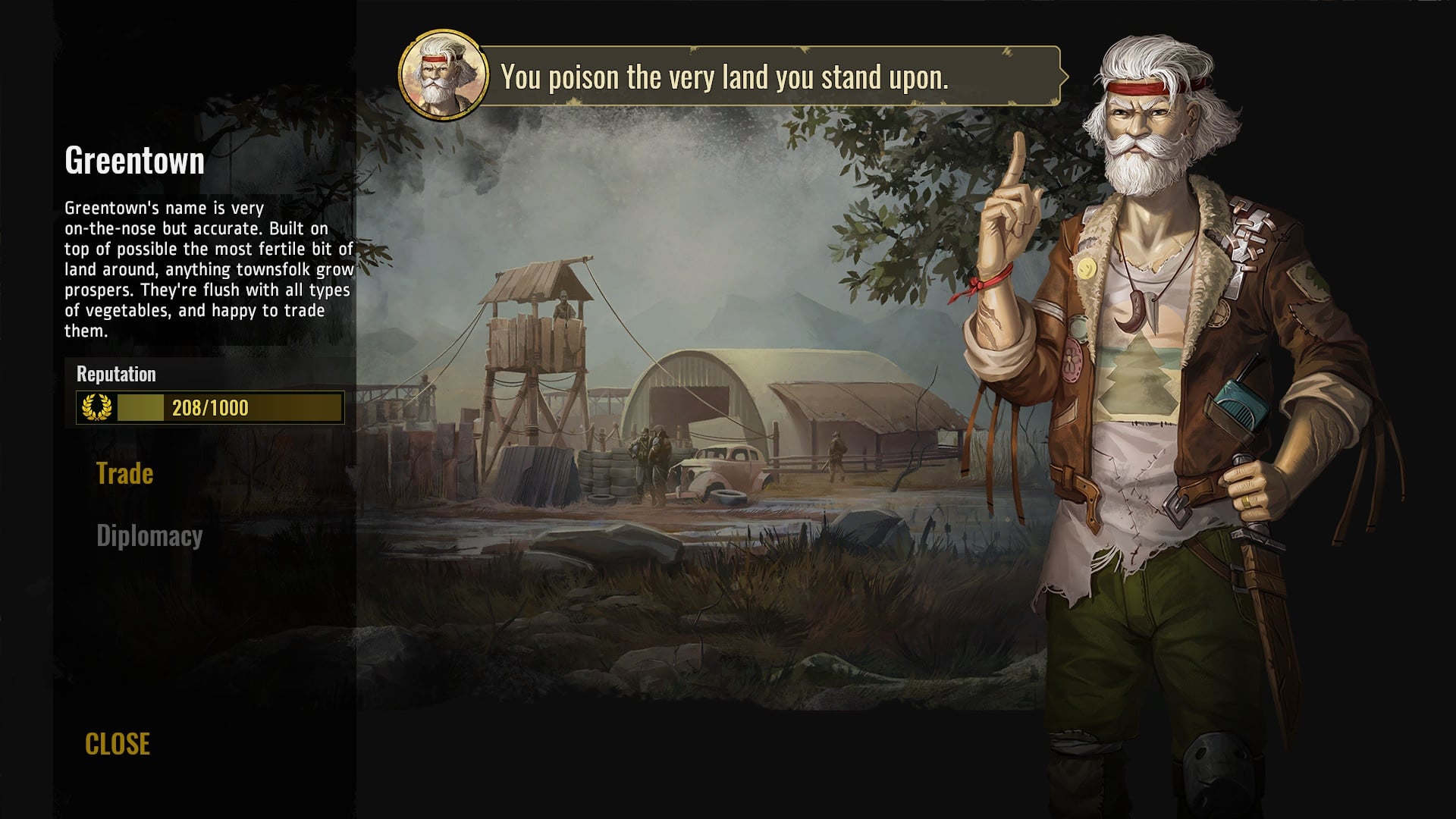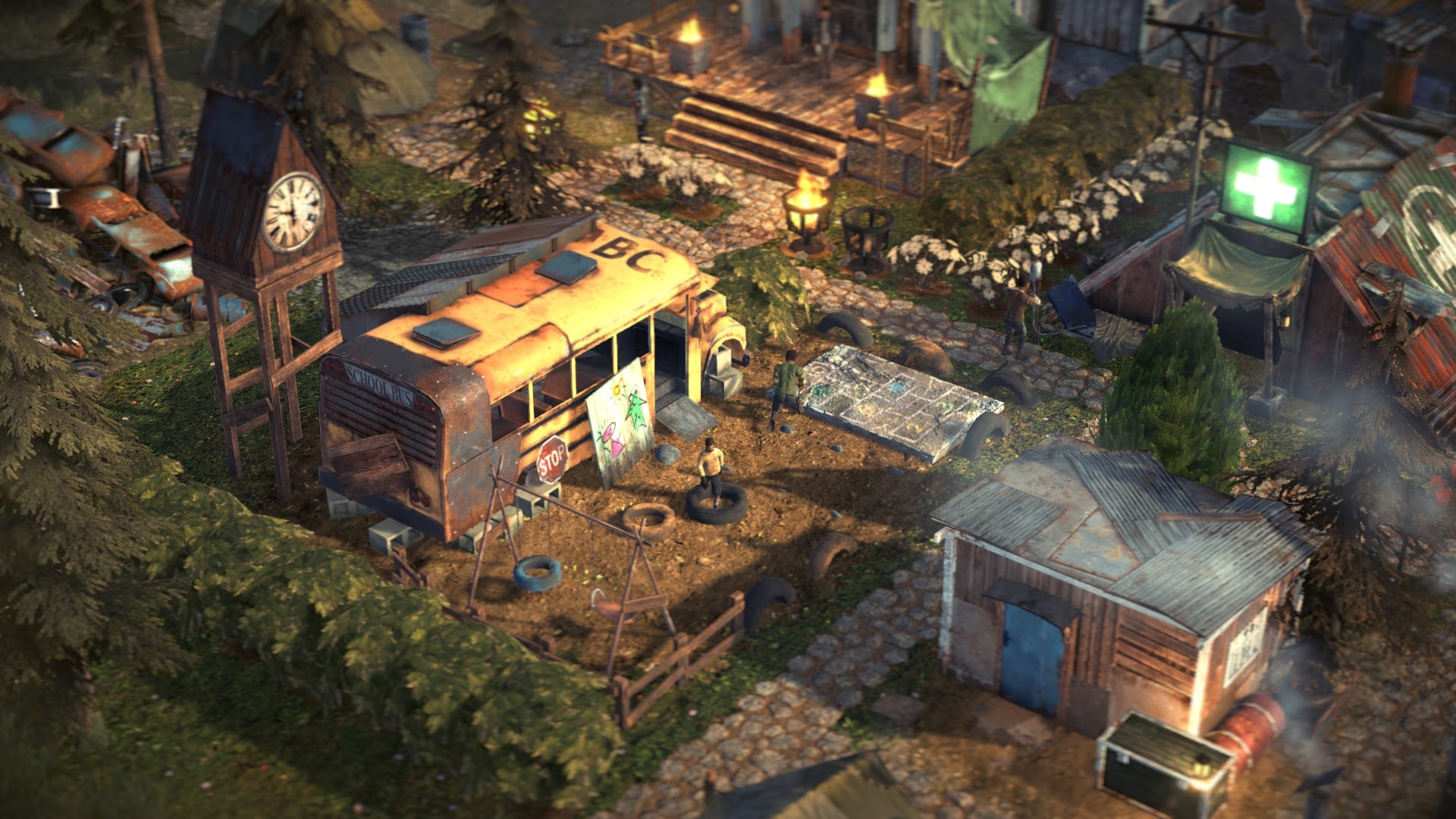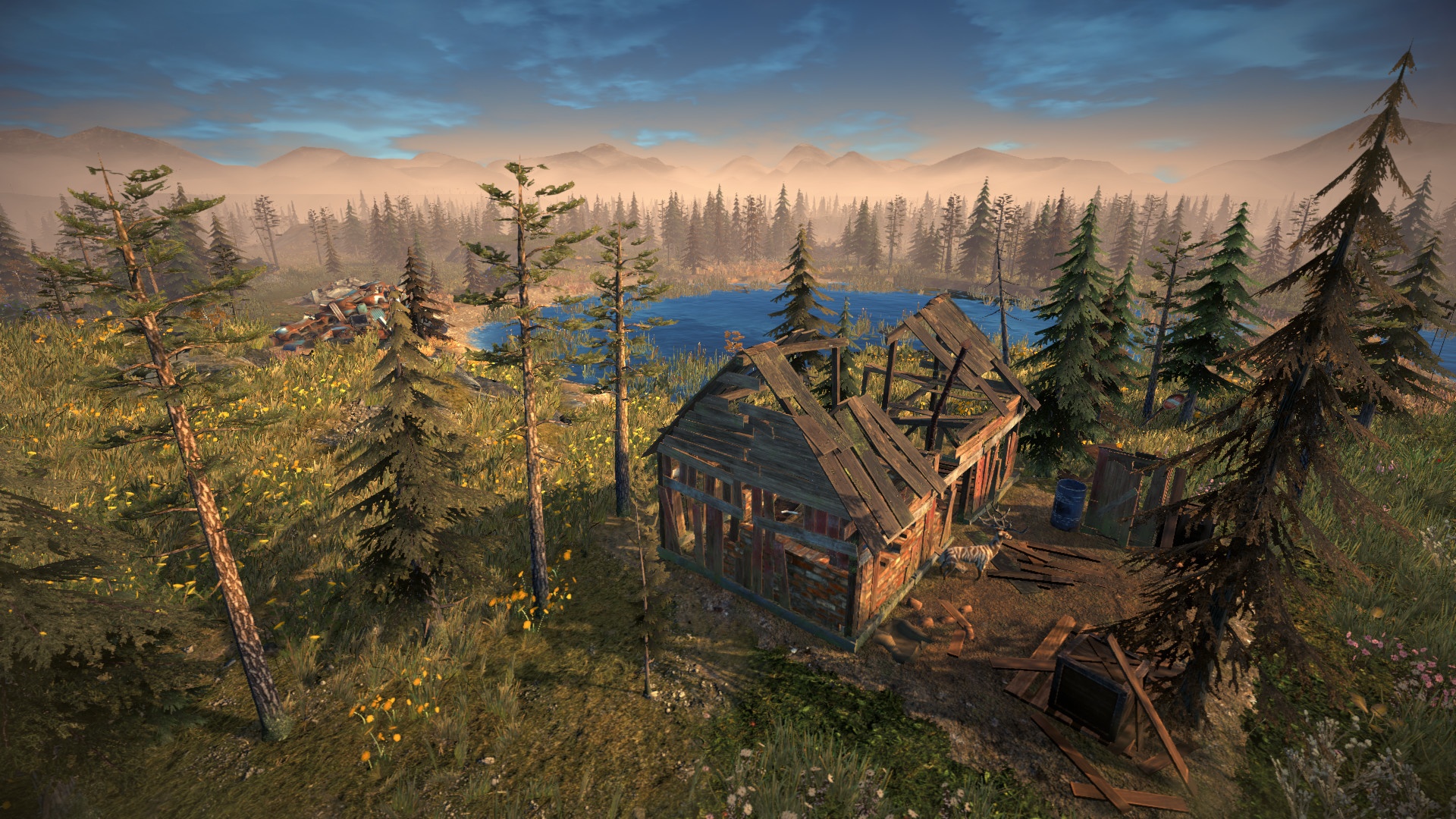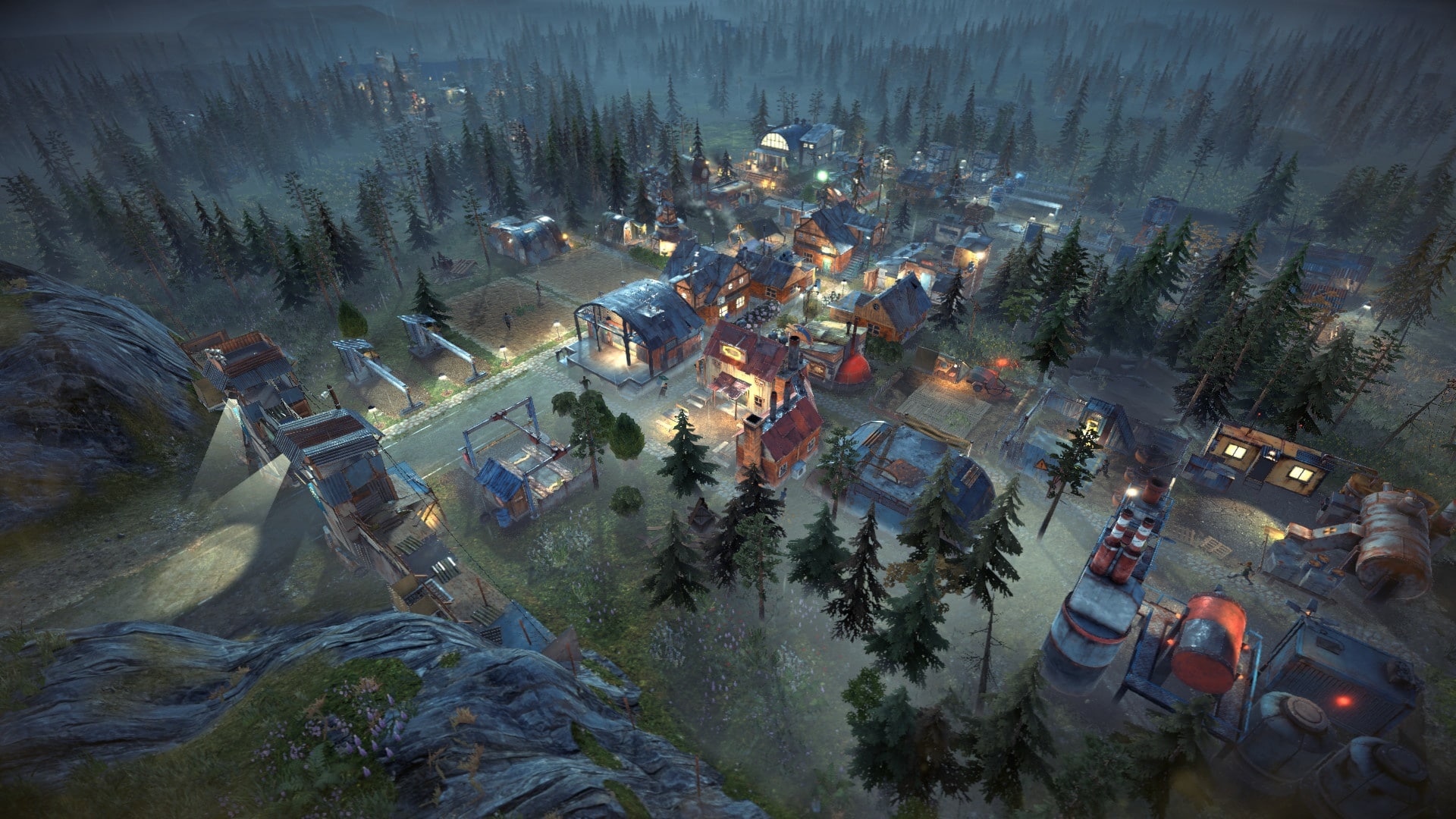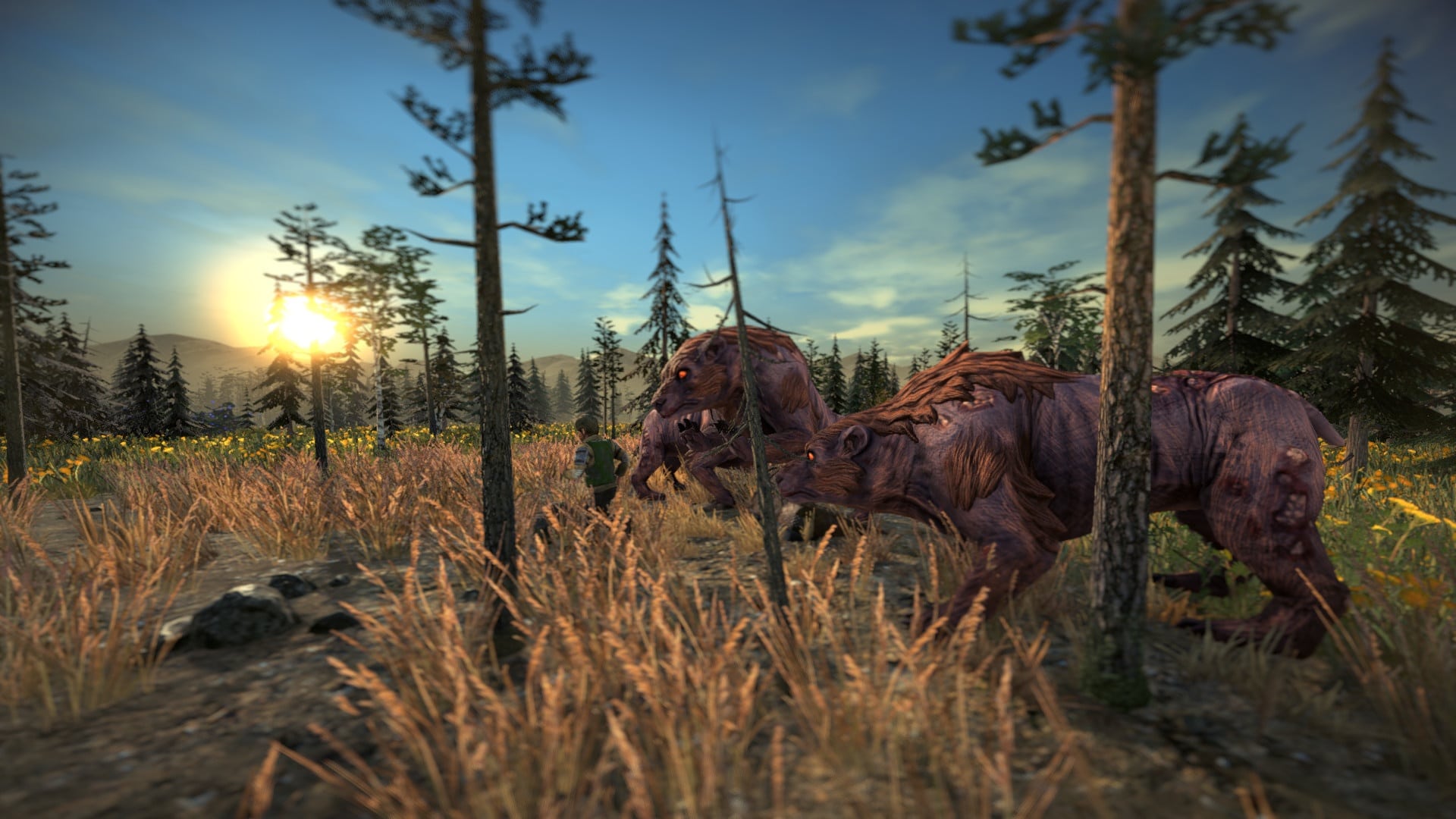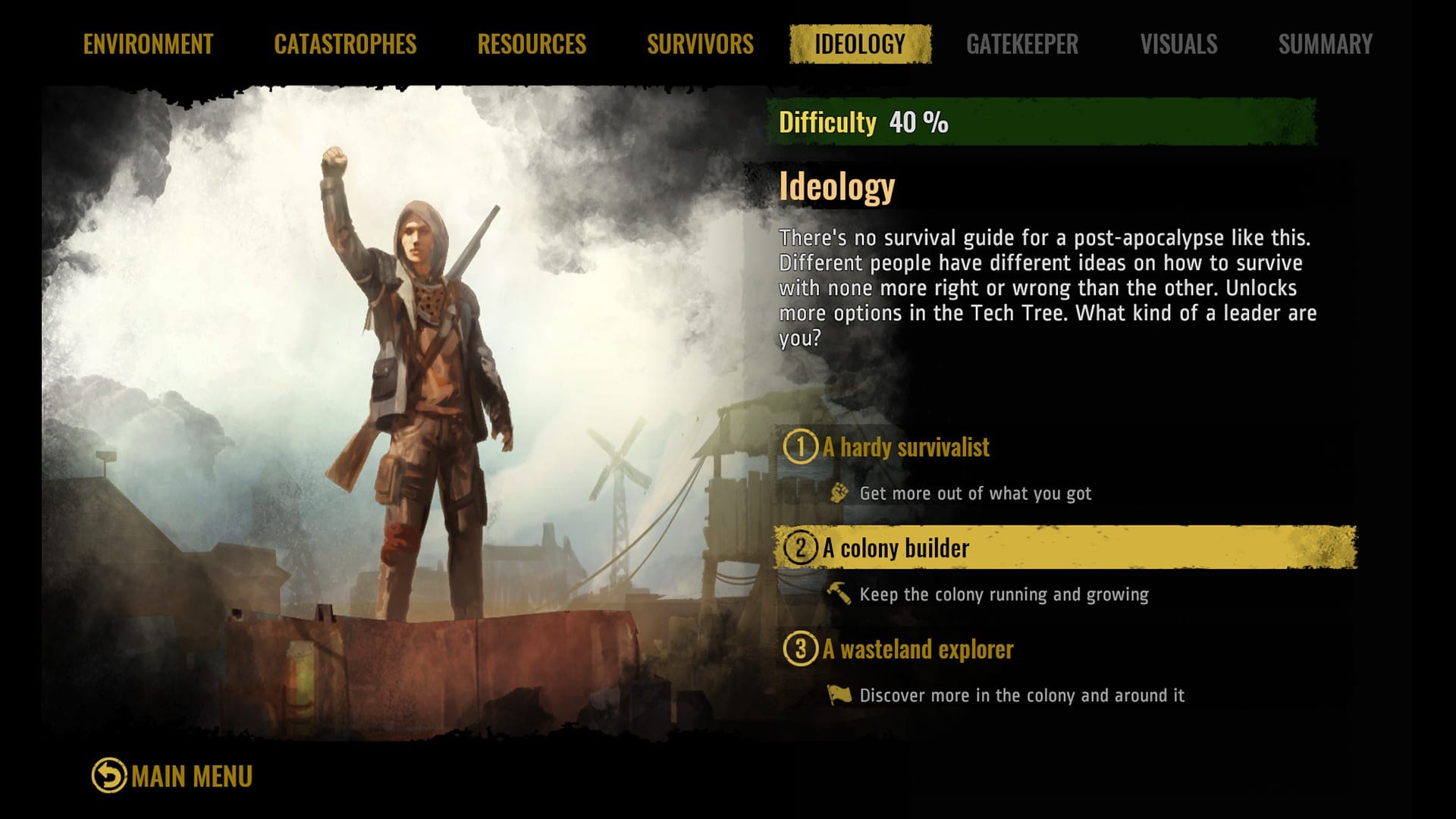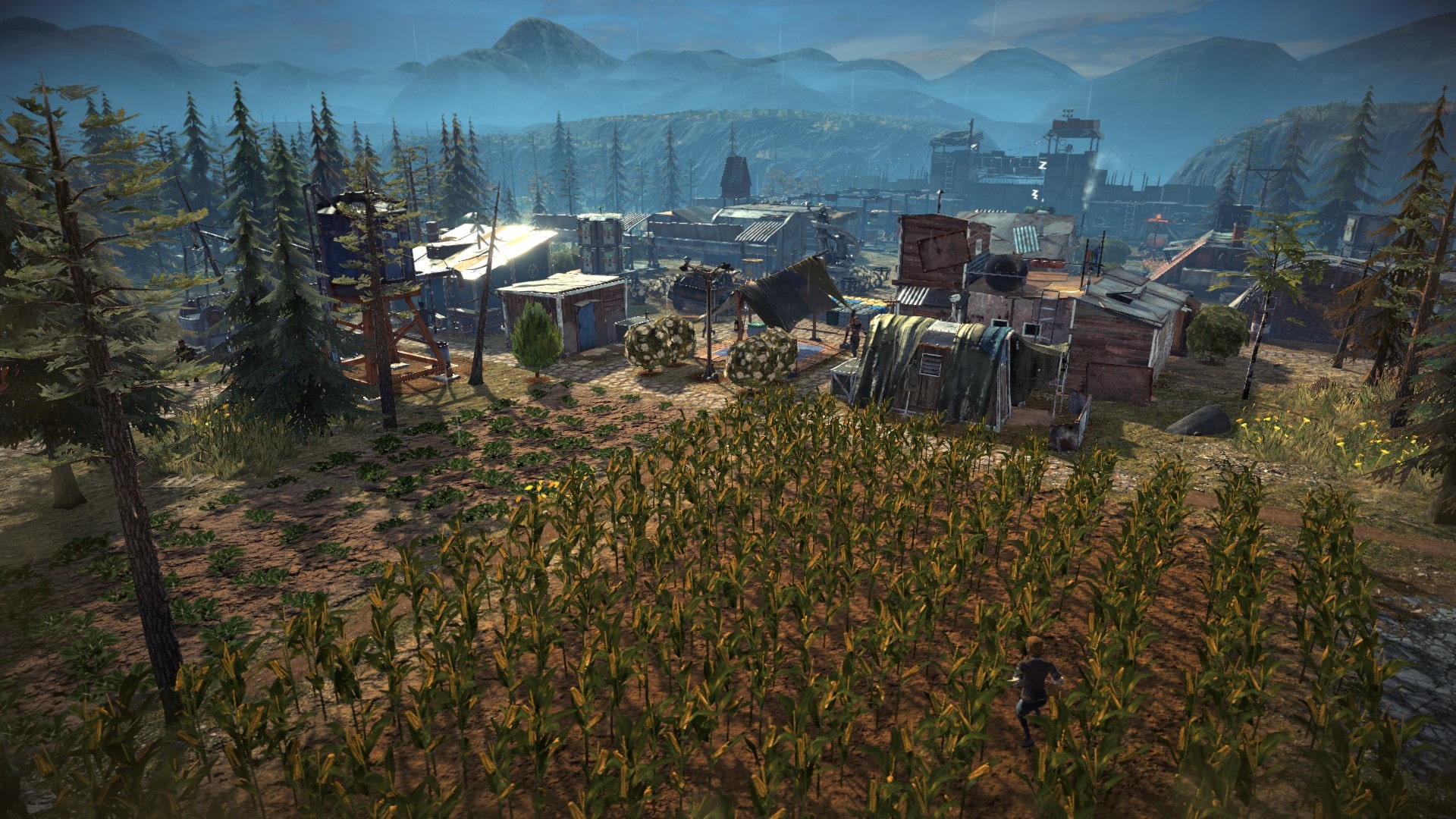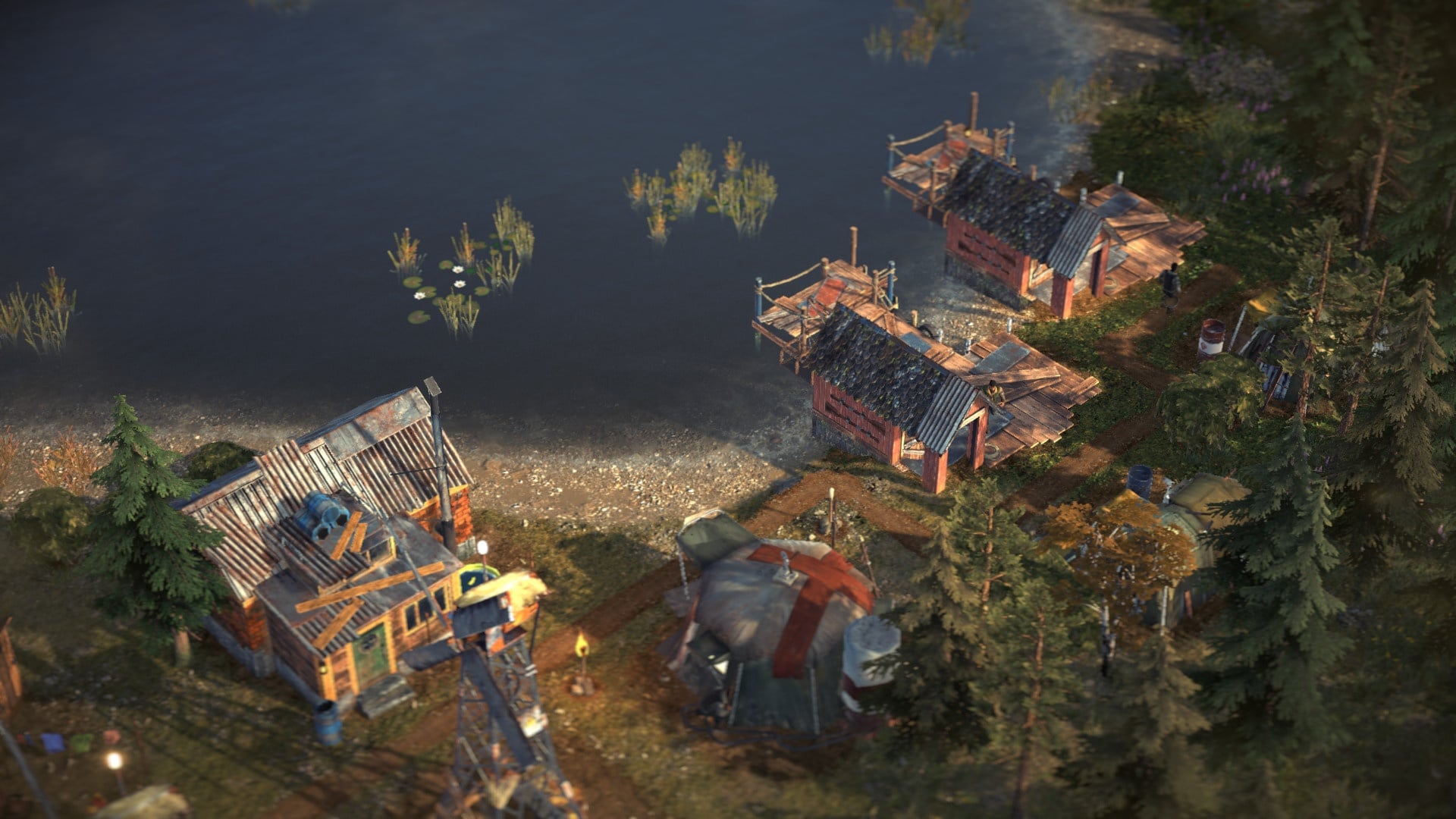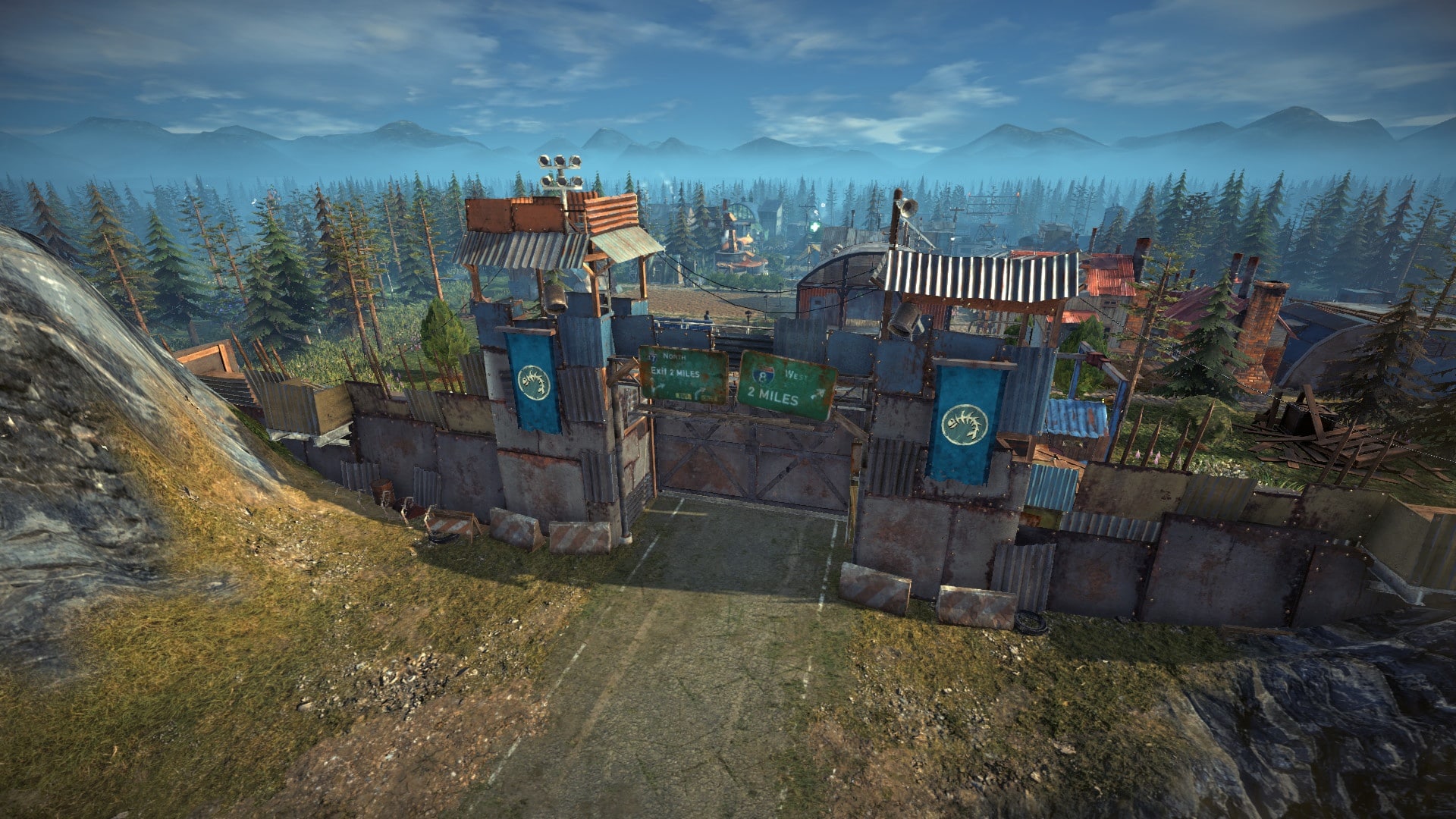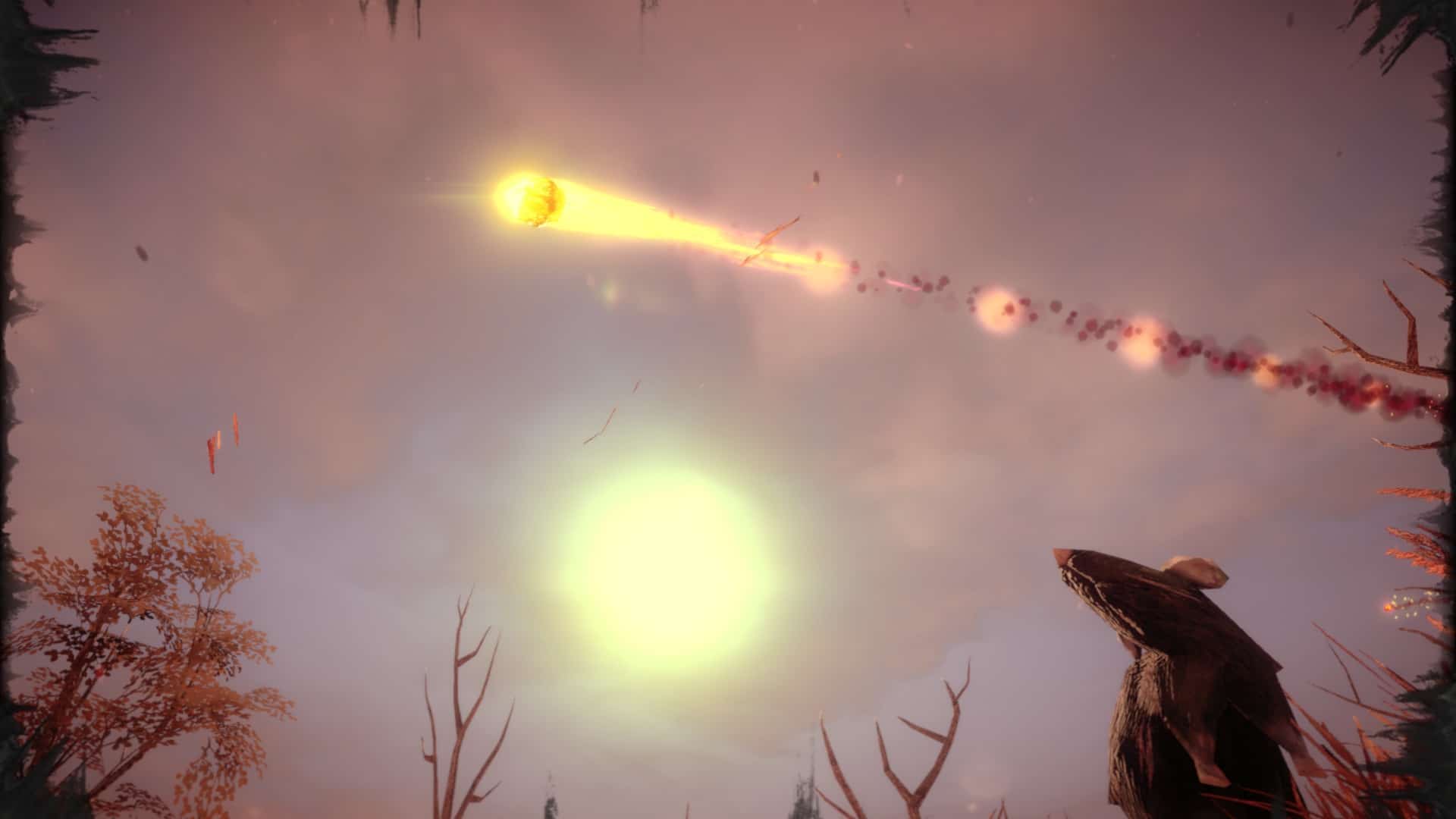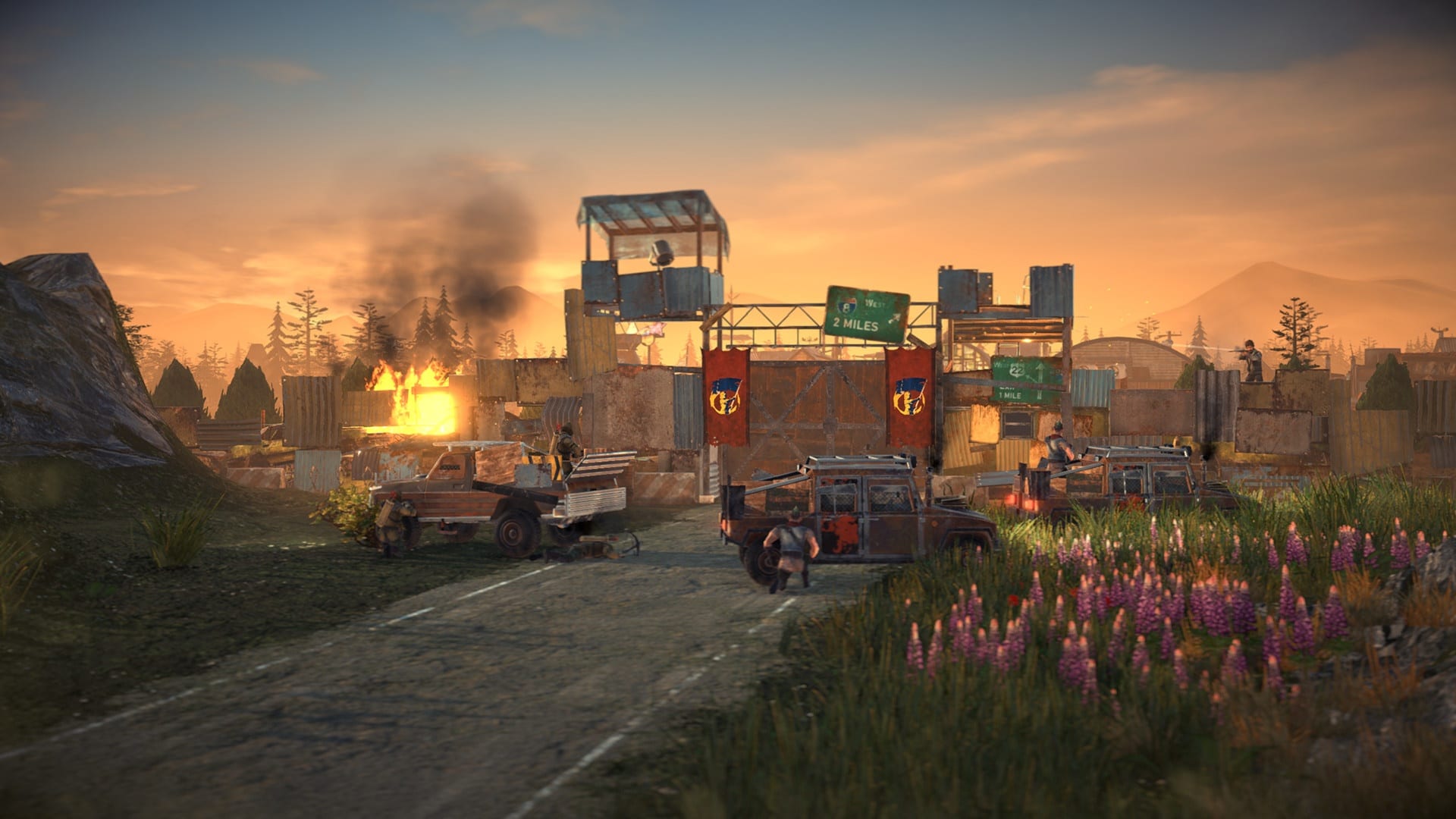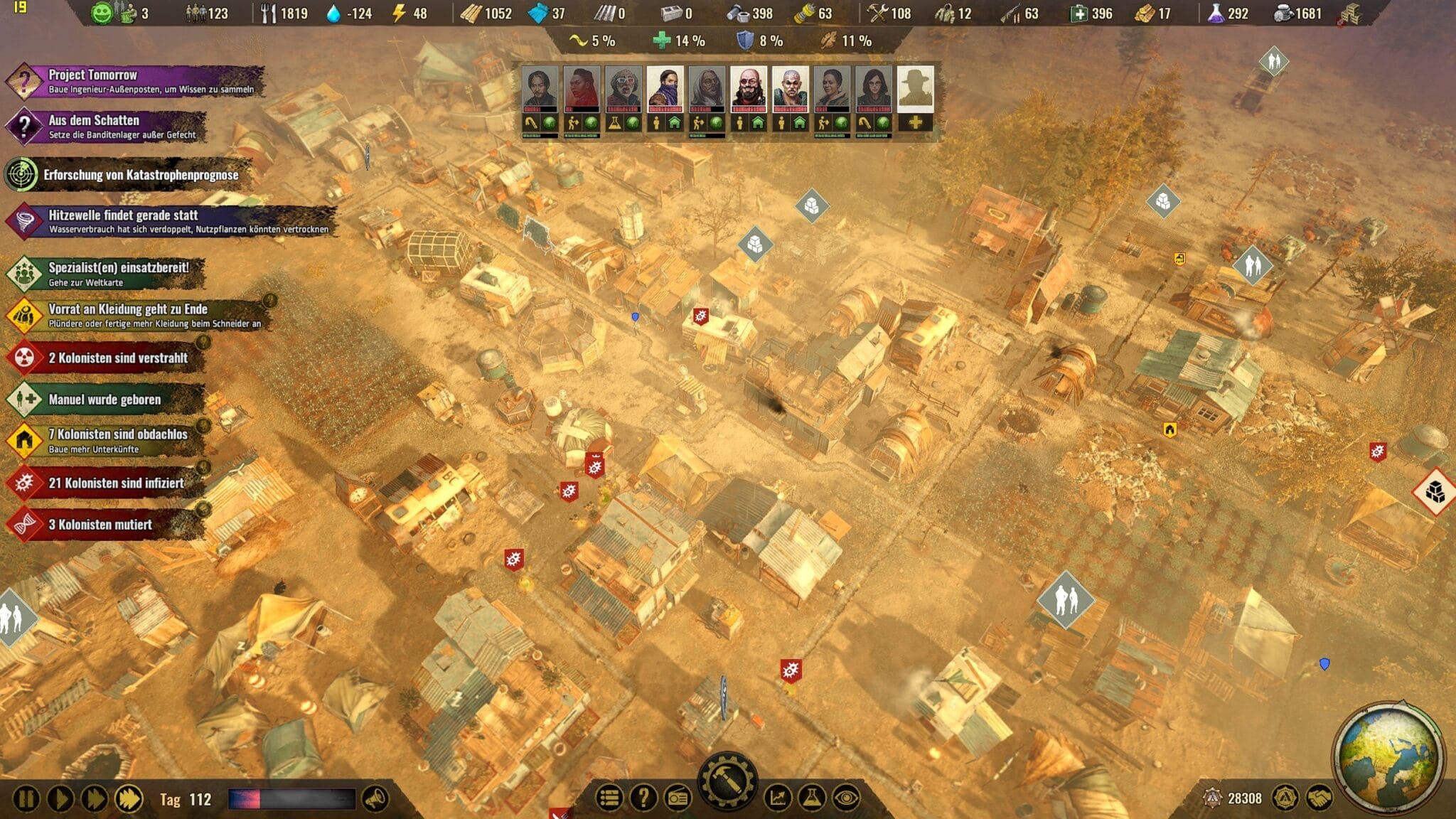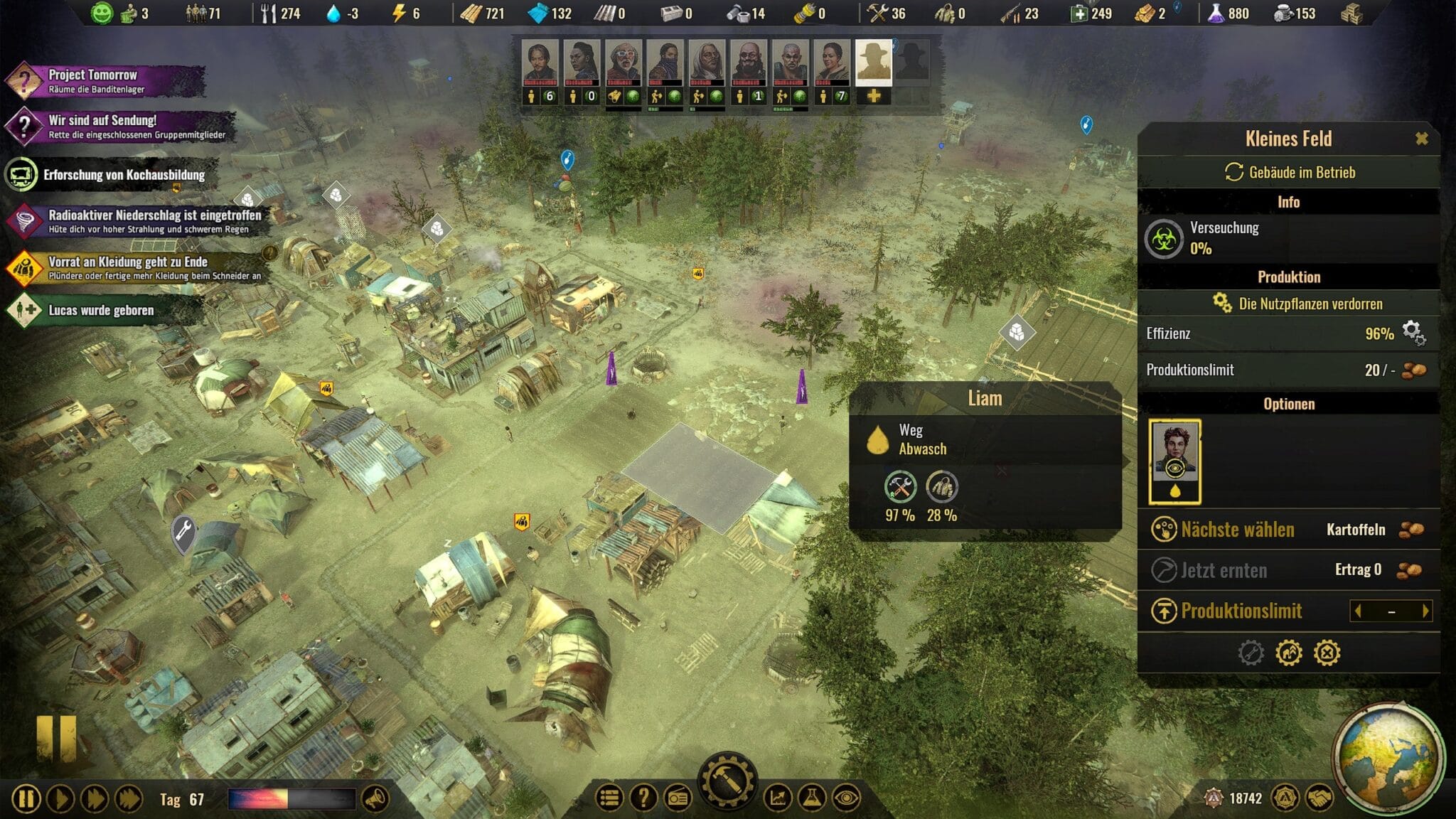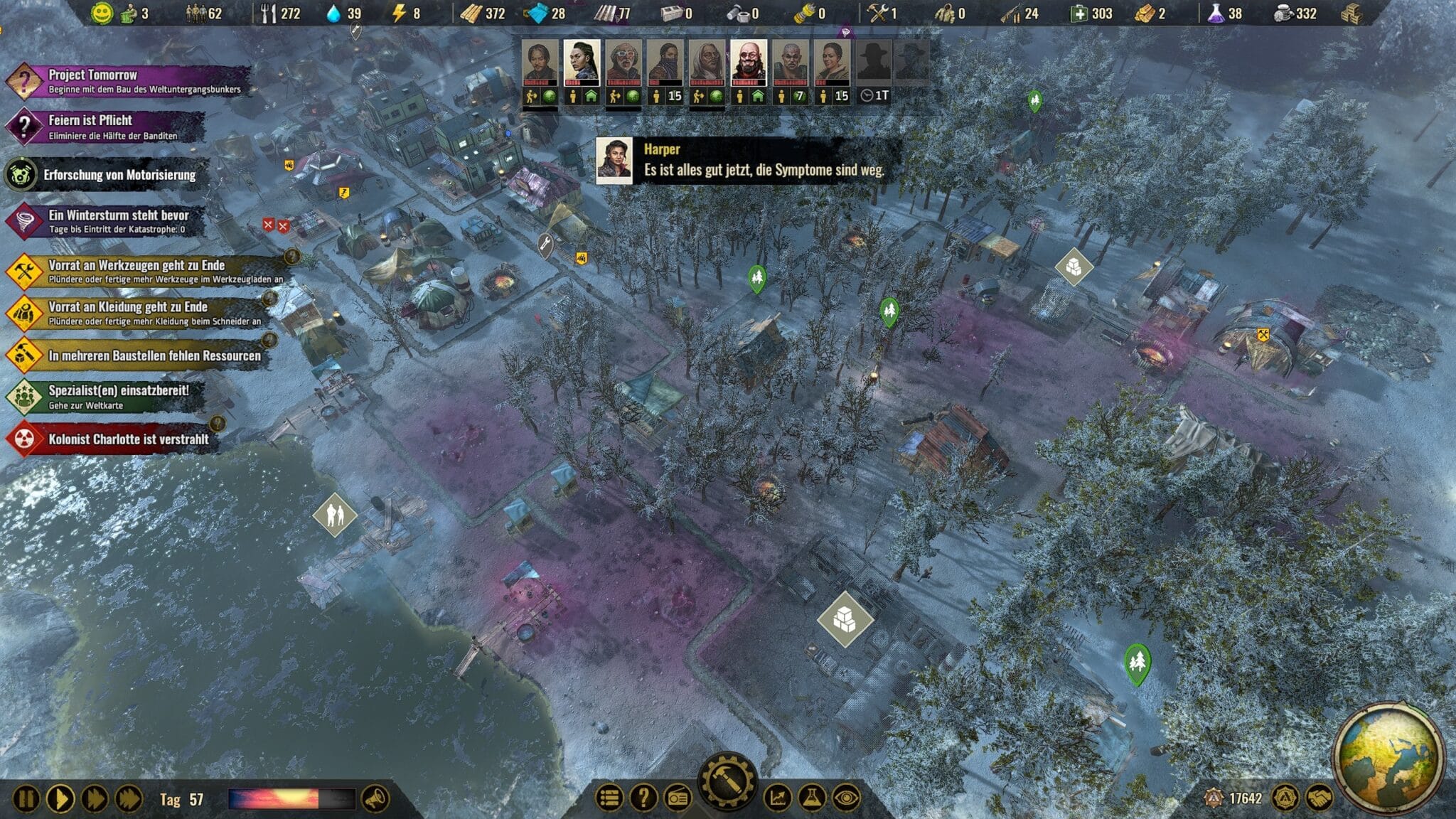With an unusual setting in the post-apocalypse, the strategy game gets off to a strong start in the test. But then it starts to stumble.
The apocalypse does have one good thing: Afterwards, there is a lot to rebuild, which is actually perfect for the genre that already bears the theme in its name – the construction strategy. So it’s almost surprising that up to now it’s mainly shooters and role-playing games that have been playing in this contaminated gaming meadow.
But now Paradox Interactive and its Finnish developer Iceflake Studios have come to the rescue. In Surviving the Aftermath you lead your settlement through the harsh times of the post-apocalypse. The title wants to pick us up with a mixture of city-building simulation, a little survival and a few role-playing elements on the world map. And it succeeds so well at the beginning that a pretty good rating was already on the cards. But with (final) time, the impression changes …
Table of Contents
Everything has its banal reasons
Every disaster has its reasons. Having only one point (negative record) in the Bundesliga after 14 match days has a lot to do with the budget. The extinction of the dinosaurs didn’t happen by chance either, at best the theories about it. The most likely explanation is that a meteorite put an end to the reptiles’ dominance. And what works once is sure to work a second time.
Namely in Surviving the Aftermath, in which humanity, distracted by eternal strife, was caught in a meteor shower. The result: everything is destroyed, the survivors hate each other, ruin everything even more – you know the drill. But now you come into play and hopefully make everything much better.
The departure after the fall
You start with a handful of settlers, some food and a few building materials. In this game, these are wood and plastic at the beginning, and metal, concrete and electronic components are added over time. With these, you first build huts and tents so that the inhabitants can enjoy a minimum of comfort.
The satisfaction of the settlers determines the birth rate, which is quite important in Surviving the Aftermath. Because muscle power is in short supply, even after 15 hours of play we had just over 150 inhabitants ready to work. At the same time, people can also die before their time, for example from disease, malnutrition or if they don’t have a roof over their heads during cold spells.
A civilisation made of scrap metal
Next, the settlement needs water from the river or wells and fresh food, which you can pick from berry bushes with food storage. Your settlers (working machines without real individuality) harvest the bushes whenever they have time. Conveniently, you don’t have to build a new camp when a supply is exhausted, but can simply move the work area to another food spot.
In the same way, you can collect wood, plastic, metal and concrete from forests, small deposits and ruins. Since most activities require a fixed job assignment and you never have as many workers as you need at any given moment, a considerable part of settlement management consists of moving workers back and forth to jobs that are needed at the moment. The fact that there is no prioritisation tool like in comparable colony sims does not make things easier.
For more classic construction strategy à la Anno in the end times, see Endzone – A World Apart.
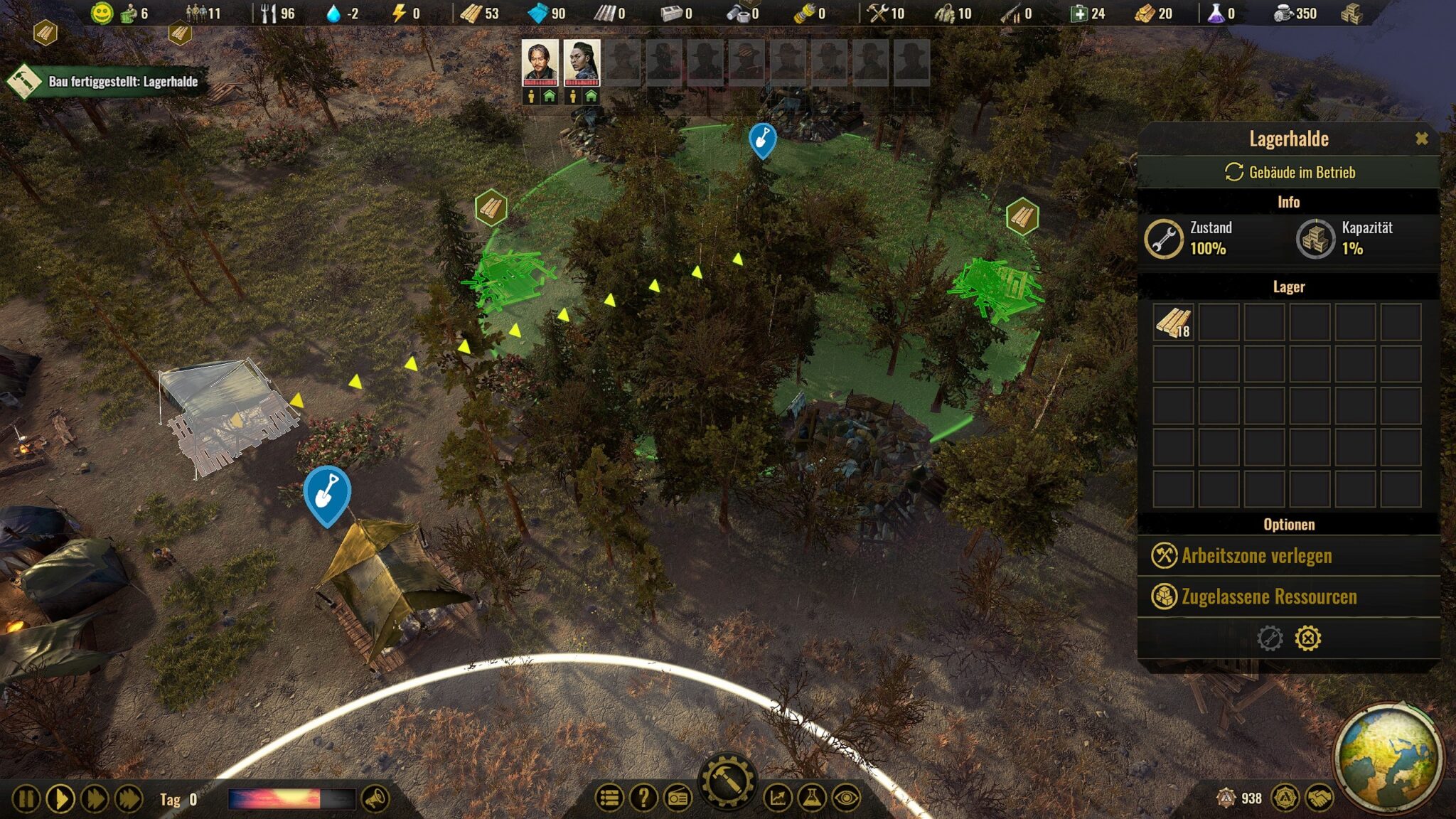
As soon as the nearby resources are used up, you have to uncover the settlement map with the help of scout towers. This is the only way to get new basic resources, at least until you find neutral settlements to trade with on the world map (we’ll get to that in a moment). Otherwise you settle as normal. You build roads, warehouses, fields, stables, processing plants, schools, hospitals and entertainment buildings. All of this happens in a graphically high-quality Fallout look that is quite impressive. You also unlock decorations such as bushes, trees and lamps in the course of the game and can use them to make the settlement even more lively.
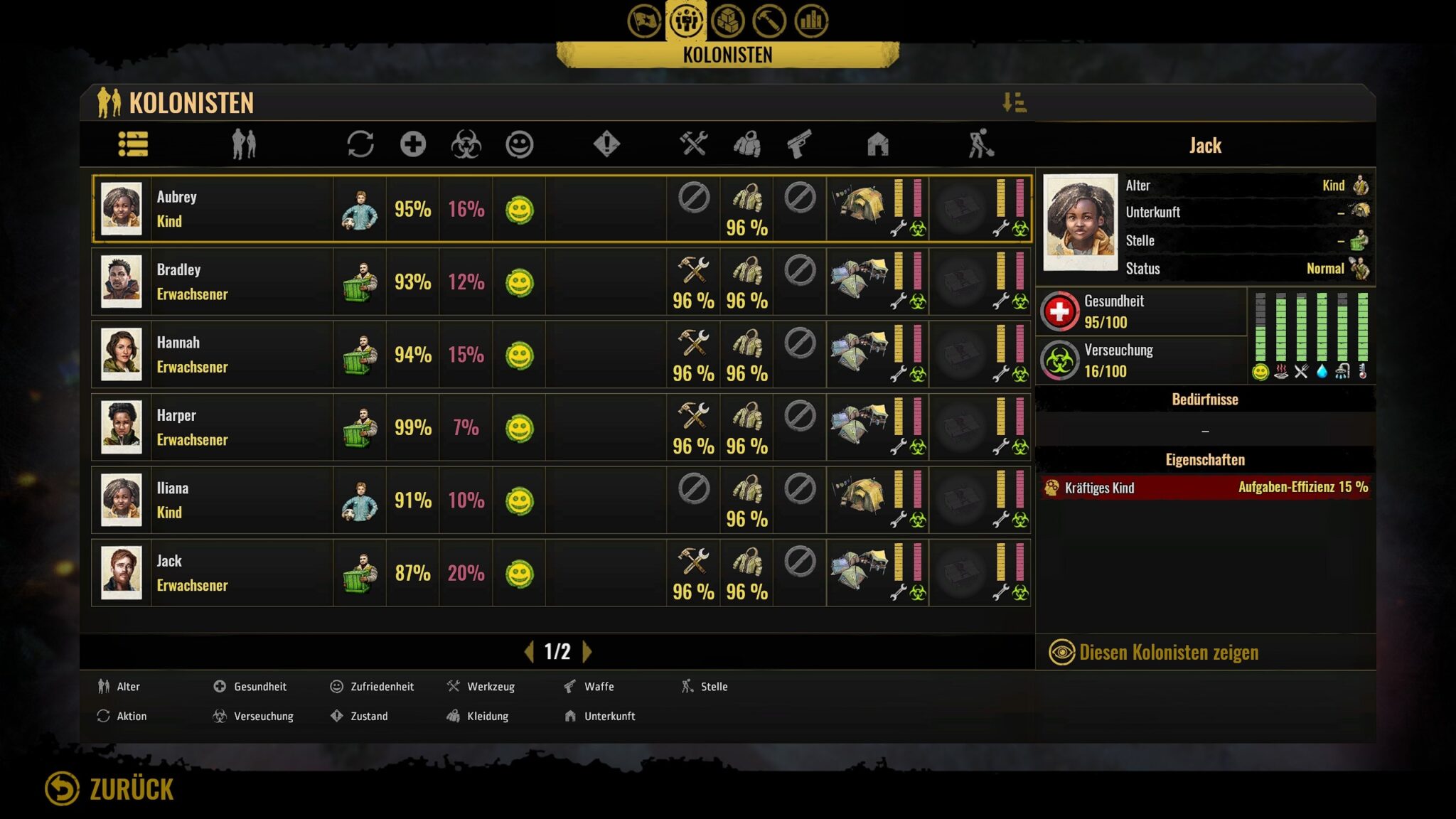
Specialists explore the world
Since the building part works well, but still only offers a few mechanics, the developers have come up with something on top: the world map. The world of Survival the Aftermath is divided into sectors that you explore with so-called specialists. These are hero characters who, depending on their class, are particularly good at research, combat, scavenging and movement. You start with two of these comrades and can move around with up to ten of them, although recruiting them costs money.
In an explored sector you will find hotspots that you can explore, loot or pacify. In return, you will receive rare materials for your settlement (such as electronic components), clothing, medicine and weapons. You can invest research points directly in new technologies that unlock new buildings and bonuses. In addition, the game tells its story on the world map. You are sent from spot to spot and always have to fight some kind of crazy gangs.
The world map overlay is half-baked
However, it sounds more spectacular than it is. Battles consist only of a direct match of attack power and health, dangerous research and looting spots simply drain a set amount of life per day. Even the rewards are predetermined. So there are no surprises. Your own effort is therefore only to use the action points effectively and to get as much out of a tour as possible before you have to send the specialist back to heal.
If you are inefficient, it will only stretch out the game time. Even if you lose a hero through carelessness, you can simply hire a new one. The specialists do not level up and cannot be equipped with items. They only have a short biography, but never speak up and thus never develop a life of their own. This is where Surviving the Aftermath wastes a lot of potential. As with the whole Endgame, it seems as if there was clearly more planned that could not be realised in the end.
Insufficiency of content in the story and in the lategame
Because even the fun of building up around your home base dwindles when the grind on the world map begins. Poor resource balancing is mainly to blame for this. Building construction and even most of the manufacturing processes such as clothing and electronic parts consume too much metal compared to the other raw materials, creating a bottleneck in the production and expansion of the settlement. Only when you are swimming in money can you simply trade for missing materials from neutral groups that you can meet on the world map and who, just like the specialists, remain completely pale in terms of the story.
Speaking of remaining pale. You may have read it between the lines: The frame story also disappoints. Apart from a few post-apocalypse clichés (crazy punk gangs want even more destruction) it has nothing to offer. There is no tension whatsoever and it doesn’t make you think. Only occasional events around your population bring some story atmosphere.
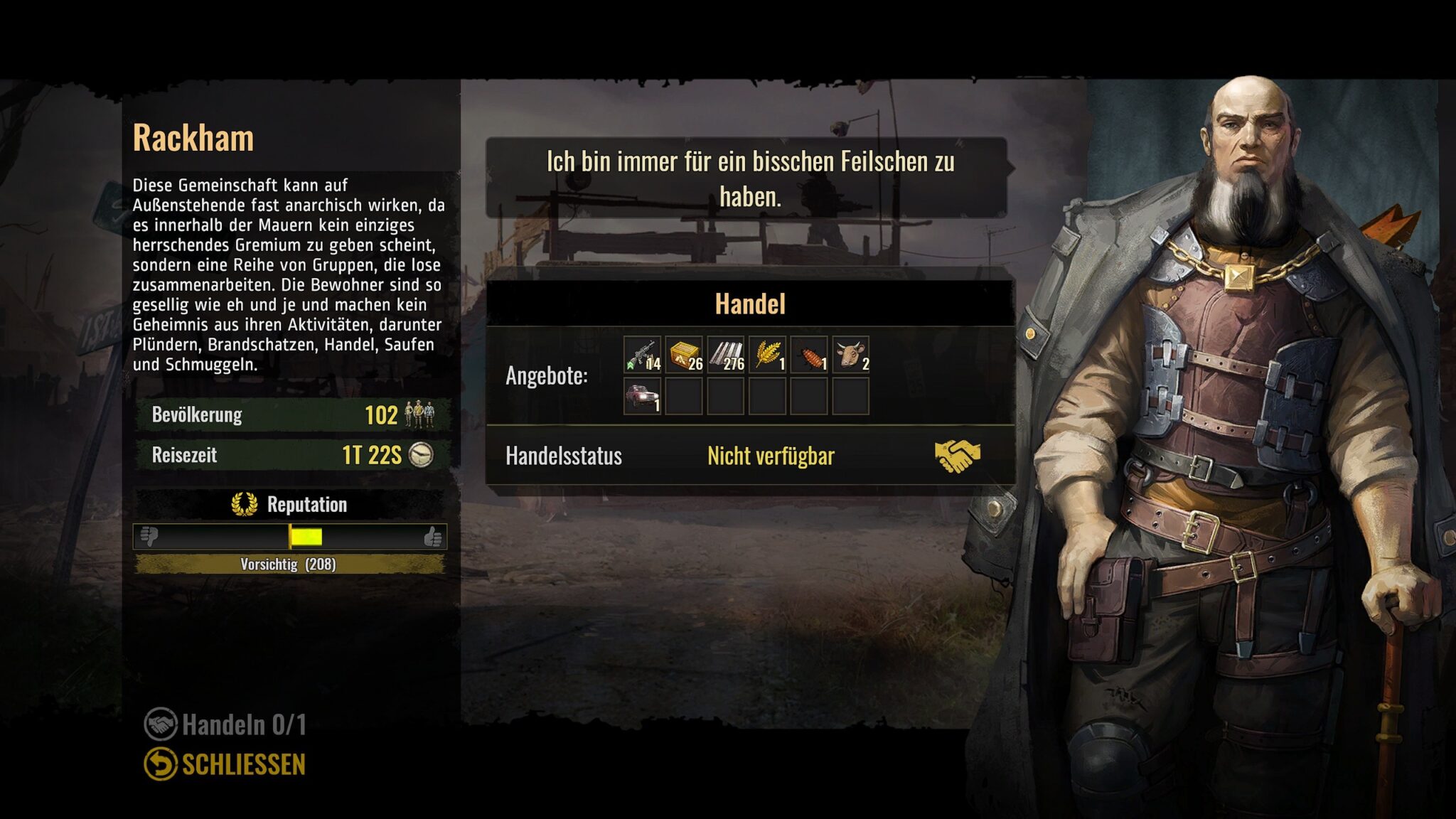
The build-up saves the game
Despite the balancing problems mentioned, settlement building is therefore clearly the strength of the game. In addition to a well-interlocked simulation around food, health and jobs, two other systems bring depth to the game: On the one hand, the population suffers from the polluted environment, which manifests itself in “radiation”. Settlers regularly fall ill when they have to pass open landfills on their way to work or when the fallout comes with the rain.
Only medical treatment can help, ideally with iodine tablets, which you can only get by scavenging or trading on the world map. You can only get rid of radioactive waste by using environmental stations, which in turn require electricity. However, you must first research how to use electricity and collect the components.
Through research you will unlock new buildings and mechanics. The environmental station, which disposes of radioactive waste, needs electricity (transformers, solar and wind generators on the left).
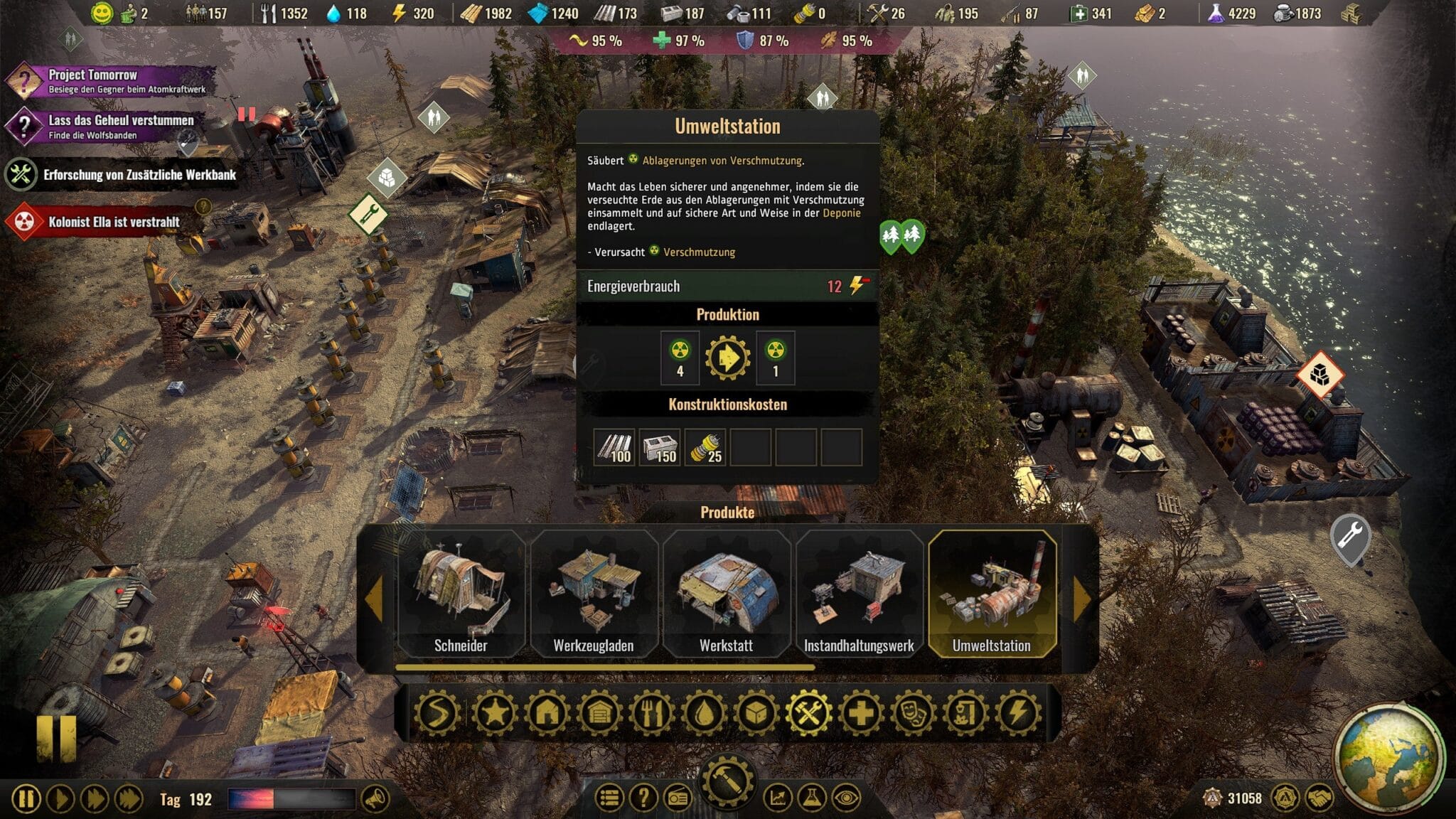
Similar connections also occur with other disasters such as droughts and pandemics that periodically strike your settlement. You can tell that a lot of time has gone into these systems. They work and are fun – at least until the game time is stretched by unnecessary grind and the lack of lategame content becomes noticeable. On the other hand, Surviving the Aftermath costs just under 30 euros on Steam and in the Epic Games Store.
Editor’s Verdict
Surviving the Aftermath is a good game. Especially the construction of my Fallout settlement was fun, among other things because the core mechanics are competently implemented and the graphics are really worth seeing. But I only finished it for the sake of the test. After ten hours of play at the latest, a monotonous grind for certain resources and scouring the world map set in.
It’s only speculation, of course, but Survival the Aftermath gives me the impression that after about two-thirds of the development time they said: “Well, this thing has to go out now. Finish what you have and cut away the rest! That would explain why more was not made of the story and the world map mechanics. There would have been a lot of potential.
Despite all this, Survival the Aftermath is not a failure. If the setting appeals to you, you won’t regret buying it (or downloading it if you have the Xbox Game Pass), I’m pretty sure. And if you’re still on the fence, just wait a few months. I could well imagine that the developers will add a lot of content by then.

